CLASSICS
Sight and Sound
March 4, 2023
Evelyn Glennie, percussion
PG. 25
POPS
The Texas Tenors
March 17-18, 2023
Matthew Troy, conductor

PG. 33
CLASSICS
Joshua Bell
April 15, 2023
Joshua Bell, violin
PG. 39
POPS
Marvel Studios
Black Panther in Concert
April 28-29, 2023
Julian Pellicano, conducting
PG. 47
CLASSICS
Oklahoma StoriesClara Luper Centennial
May 13, 2023
Karen Slack, soprano
PG. 53
HOUSE NOTES SEE PAGE
FOR
23.

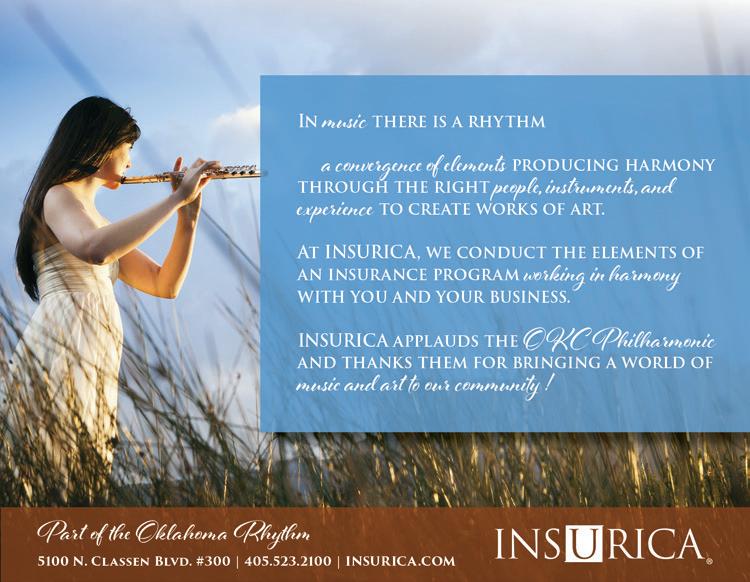

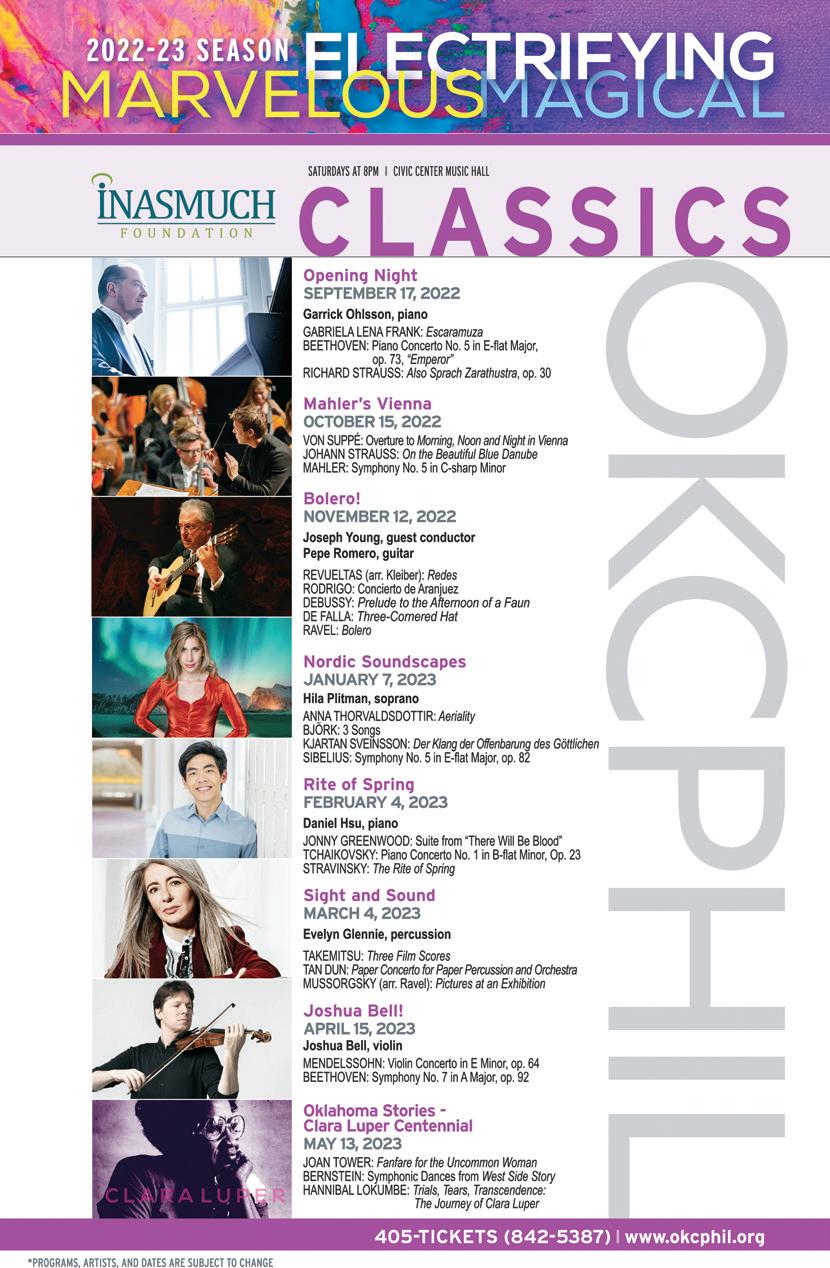


JANE JAYROE GAMBLE, President Oklahoma Philharmonic Society, Inc.
Welcome to this time of magnificent music by The Oklahoma City Philharmonic Orchestra. As we begin this thirty-fourth season, it is with enormous gratitude to each of you for sharing the music, for supporting our musicians, and for applauding our extra efforts to educate as well as perform. For decades, you have said this type of artistic excellence makes a difference. It not only provides high quality entertainment but it helps define a great city—our city.
It is my greatest privilege to serve as President of the OKCPHIL board this season. Our leadership team is strong, our musicians are extraordinary, and our board is dedicated. The past few years have been an enormous challenge to everyone, leaving scars and divisions, as well as losses. Music is one way back to wholeness –individually and as a community. Let’s not miss a beat, as the Philharmonic presents a stunning season under the creative direction of Maestro Alexander Mickelthwate with some of the nation’s most outstanding artists. Executive Director Agnieszka Rakhmatullaev and her dedicated team will assure successful programming and continual growth and service in our community. Also, thanks to the Orchestra League and the Associate Board for their volunteer efforts. We’re all a dedicated and musical family!
This is the season to be a part of something grand that is yours to claim and enjoy. Be proud, OKC, we have so much to celebrate together. Hallelujah!
DEBRA KOS, President Oklahoma City Orchestra League
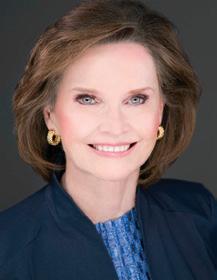
The Oklahoma City Orchestra League is honored to welcome you to the 34th season of the OKC Philharmonic. We are excited about the lineup presented by our wonderful Maestro, Alexander Mickelthwate, and our talented OKCPHIL musicians!
This year, it is my privilege to serve as President of the Orchestra League, and we will continue with our mission to educate, enrich, and inspire our community by supporting orchestral music and promoting volunteerism. Our social activities and fundraising efforts provide support to the Oklahoma City Philharmonic, and our educational programs and instrumental competitions promote inspiration and inclusion to our community at large. As always, we look forward to welcoming you to our annual Symphony Show House and other special events.
If music is the universal language of mankind, uniting us all by providing connection and inspiration, then we say “let the music play”!
DESIREE SINGER, President Associate Board
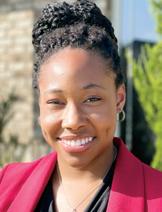

On behalf of the Oklahoma City Philharmonic Associate Board, it is my privilege to welcome you to the 2022-2023 season! This season is brimming with dynamic and diverse programming that will resonate with everyone. From works that graced the Silver Screen, to an evening in Vienna, to a one-of-a-kind work commissioned by your OKC Philharmonic honoring the 100th birthday of the great Civil Rights icon and native Oklahoman, Clara Luper , this season is sure to excite.
The mission of the Associate Board is to provide an environment for young professionals to cultivate a love for the orchestral arts and connections with others who value what the arts add to our beautiful city. To do this, we have created the Overture Society, a threeconcert package that also provides other opportunities to socialize, network and serve the community. Consider joining the Overture Society today and show your support for OKC’s arts. We are excited to have you!
THIRTY-FOURTH SEASON 7
WELCOME
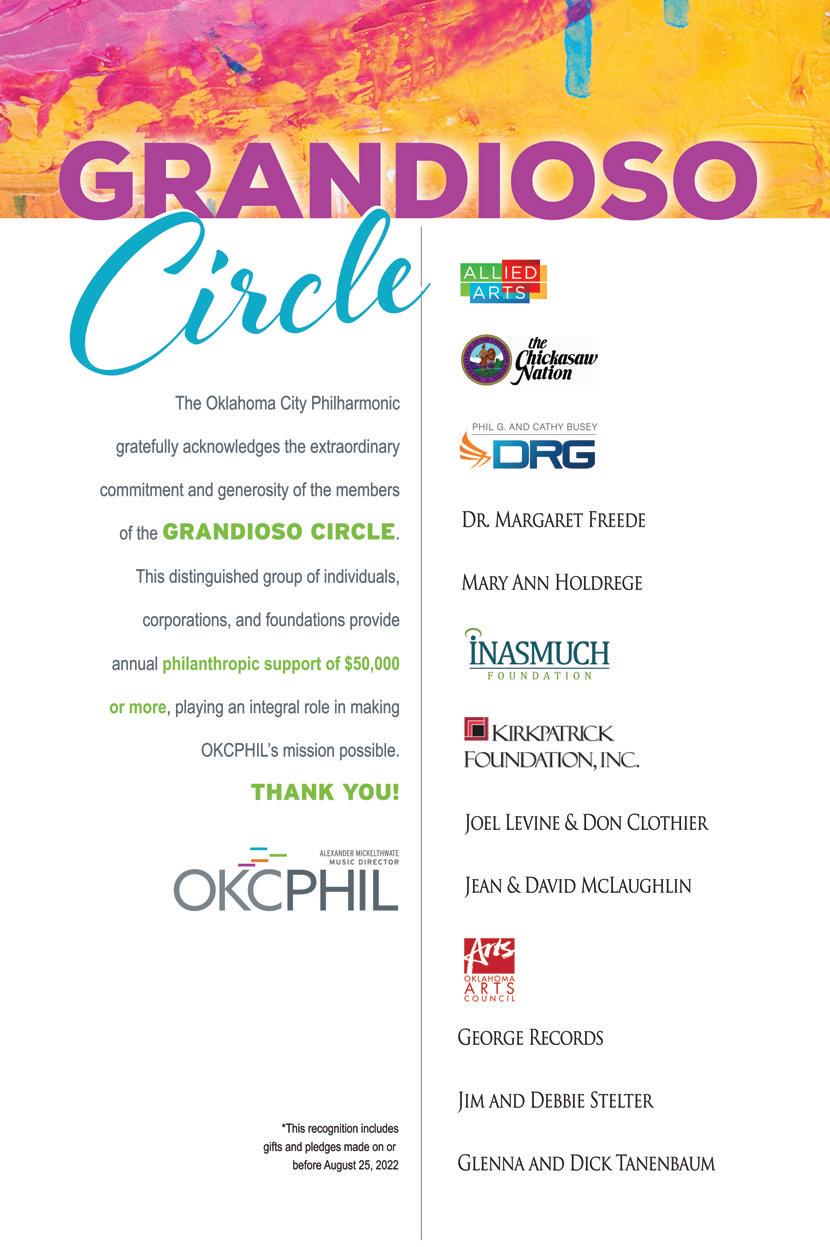
8
EXECUTIVE DIRECTOR
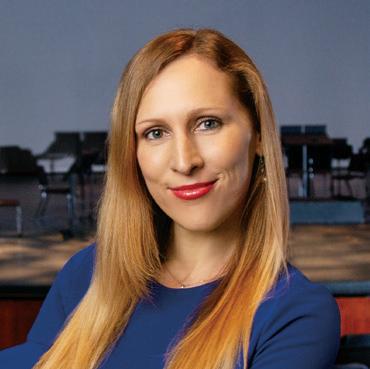
AGNIESZKA RAKHMATULLAEV
On behalf of the entire OKCPHIL Family, welcome to our 2022-23 Season! We are thrilled to present another year of phenomenal performances and programs, as we continue to serve our mission of providing joy and inspiration through orchestral music to our community.
This season’s Inasmuch Foundation Classics Series continues to present orchestral staples, such as Mahler’s Fifth Symphony, Stravinsky’s “The Rite of Spring,” and Mussorgsky’s “Pictures at an Exhibition.” We will bring onto our stage some of the most renowned artists of the world, including pianist Garrick Ohlsson, guitar legend Pepe Romero, percussionist Evelyn Glennie, and violin virtuoso Joshua Bell. Our season finale will feature OKCPHIL’s large-scale commission by award-winning composer Hannibal Lokumbe to celebrate the Centennial of civil right activist Clara Luper.
The Chickasaw Nation Pops Series continues to present diverse offerings of highest caliber: the 90th Birthday Celebration of John Williams, a special Christmas program featuring the Grammy and Emmy nominated artist Michael Feinstein, an evening with Oklahoma’s beloved Kelli O’Hara, and much more. This fantastic lineup is not to be missed, so bring along your family, friends, colleagues, and neighbors to enjoy a special evening of musical entertainment!
Additionally, the OKCPHIL continues its commitment to offering accessible music, both in the hall and across our region, through a great variety of Education and Community Engagement programs. From our free outdoor orchestral concerts at the Scissortail Park, annual “Youth Concerts” for elementary school students, “Society of Strings” program for adult amateur string players, and Young Musician Competition for talented players, these initiatives continue to serve thousands of Oklahomans of all ages.
We are deeply grateful for your ongoing loyalty, support, and generosity that makes all of this possible. Your individual ticket purchases, season subscriptions, and annual fund donations allow us to deepen our impact in the community in numerous ways. As we continue to navigate some challenging times, the OKCPHIL remains committed to bringing high-caliber orchestral performances and accessible Education and Community and Engagement programs to our community, while partnering with various organizations and elevating the quality of life in our beautiful state.
Thank you and we look forward to seeing you at our concerts throughout this season!
9
THIRTY-FOURTH SEASON

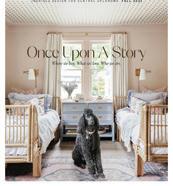






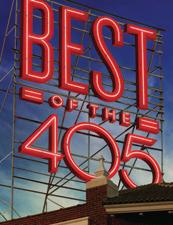











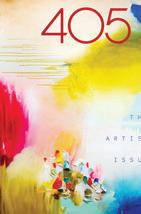







GET MORE OUT OF YOUR CITY SUBSCRIBE TO 405 MAGAZINE! 405 connects you to the best of the Oklahoma City metro’s dining, events, travel and homes. Visit 405magazine.com to subscribe.
ALEXANDER MICKELTHWATE
When Alexander Mickelthwate told his young son Jack they were moving from Winnipeg, Canada, to Oklahoma City, his first thought was: “But Dad, they have tornadoes there!” It was 2018, and Mickelthwate had just accepted a new position as Music Director of the Oklahoma City Philharmonic. Tornadoes aside, he knew instinctively Oklahoma City would be a good fit—both personally and professionally.

“We spent 12 years in Winnipeg,” Mickelthwate said, “And I also lived in Los Angeles and New York City. But Oklahoma—it is a perfect fit. For my wife and our two sons, it gives us the feeling of a large city, yet small enough to have a sense of community. And leading our state’s premiere orchestra is an amazing opportunity.”
Mickelthwate was born and raised in Frankfurt, Germany. He received his degree from the Peabody Institute of Music, and has worked with orchestras in Atlanta, Winnipeg and Los Angeles.
He is Music Director Emeritus of the Winnipeg Symphony Orchestra in Canada, and in 2022 Mickelthwate accepted the position of Music Director for the prestigious Bear Valley Music Festival in Bear Valley, California.
As he begins his fifth season with the OKCPHIL, Mickelthwate has become quite aware of what his hometown audiences want in a performance—sometimes traditional, sometimes innovative, but always with a good dose of enthusiasm.
“My wife Abigail and I celebrated our 25th anniversary at ‘Nonesuch’ restaurant,” Mickelthwate said. “Our meal consisted of a number of different dishes—some familiar, and some new and exciting. As I sampled each course, I thought that’s how our programming is. We are giving our audiences the traditional music they love, but also letting them experience a new palate.”
Giving back to the community is an important role Mickelthwate takes seriously. After guest conducting the Simon Bolivar Orchestra in Venezuela and experiencing the life-changing power of the El Sistema program, he played an instrumental part in creating Sistema Winnipeg.
Mickelthwate has embraced Oklahoma City and it’s rich and colorful tapestry. Artistically, he has programmed several concerts with a Native American theme, and has created some touching tributes to our city’s history. Two years ago, he led the commissioning of a special piece for the 25th anniversary of the Oklahoma City bombing, and this season the OKCPHIL presents an original work celebrating the centennial of civil rights icon Clara Luper.
“I have so much I want to do,” Mickelthwate said. “I want Oklahoma City to think of us as part of the family. If you’re a regular patron, we thank you. If you’re new to the OKCPHIL, welcome—we are thrilled you’re here!
“I believe music has a healing effect,” he continued. “It goes straight to the heart, and it unites us all. I truly love Oklahoma City and am so proud to be part of the community.”
11
THIRTY-FOURTH SEASON
MUSIC DIRECTOR



OKLAHOMA PHILHARMONIC SOCIETY, INC
THE BOARD OF DIRECTORS
OFFICERS
Jane Jayroe Gamble President
Jerrod Shouse President Elect
Kelly Sachs
Vice President
Kevin Dunnington Treasurer
Jennifer Schultz Secretary
Brent Hart Immediate Past President
ADMINISTRATIVE STAFF
John Allen General Manager
Jose Batty Music Librarian
Mark Beutler Director of Marketing & Public Relations
Blossom Crews Director of Development
Jared Davis Customer Service Representative
Allison Demand Concert Operations Assistant & Guest Artist Liaison

ACKNOWLEDGEMENTS
Classical KUCO 90.1
Morningstar Properties
LIFETIME DIRECTORS
Jane B. Harlow
Patrick Alexander
DIRECTORS
Phil Busey
Louise Cleary Cannon
Robert Clements
Joy Hammons
Kirk Hammons
Dean Jackson
Mautra Staley Jones
Debra Kos
Kristian Kos
Jeana Gering Education Manager
Daniel Hardt Finance Director
Brent Hart Executive Director
Judy Hill Administrative Assistant
Daryl Jones Senior Manager of Ticketing & Patron Data
Stephen Kelleher Box Office & Marketing Assistant
Oklahoma City Police Association
George Ryan
Jessica Martinez-Brooks
Margaret Freede Owens
Matt Paque
Craig Perry
Jim Roth
Amalia Miranda Silverstein
Desiree Singer
Doug Stussi
Geetika Verma
Renate Wiggin
Joel Levine
Archivist/Historian
Leroy Newman
Stage Manager
Ashley Spears Development Associate
Robin Sweeden
Institutional Giving Coordinator
Corbin Taggart
Marketing Coordinator
Valorie Tatge
Orchestra Personnel Manager
Stubble Creative, Inc. The Skirvin Hotel Titan AVL
PHOTOGRAPHERS: Michael Anderson, Simon Hurst, Mutz Photography, and Shevaun Williams and Associates
THE OKLAHOMA PHILHARMONIC SOCIETY, INC.

424 Colcord Drive, Ste. B
• Oklahoma City, Oklahoma 73102
Tickets: (405) 842-5387 • Administration: (405) 232-7575 • Fax: (405) 232-4353 • www.okcphil.org
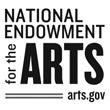
13
INSPIRATION AND JOY
PROVIDING
THROUGH ORCHESTRAL MUSIC
AFFILIATED PARTNERS
The Oklahoma City Philharmonic Foundation was established to provide leadership and endowment expertise to help ensure a stable financial base for orchestral music and musical excellence in Oklahoma City for generations to come. Distributions from the Oklahoma City Philharmonic Foundation provide a meaningful and secure source of annual income for the Philharmonic’s operations, continually confirming the importance of endowment in an organization’s long-range planning and overall success.
Current officers and directors of the Oklahoma City Philharmonic Foundation are:

OFFICERS
Douglas J. Stussi, President
Charles E. Wiggin, Vice President
Louise Cleary Cannon, Treasurer
Penny M. McCaleb, Secretary
DIRECTORS
Steven C. Agee
Patrick B. Alexander
J. Edward Barth
L. Joe Bradley
Teresa Cooper
Paul Dudman
Mischa Gorkuscha
Jane B. Harlow
Brent Hart
Jean Hartsuck
Michael E. Joseph
Harrison Levy, Jr.
Duke R. Ligon
Jessica Martinez-Brooks
Michael J. Milligan
Alice Pippin
Erik Salazar
Jeff Starling
Richard Tanenbaum
EXECUTIVE COMMITTEE
Debra Kos President
Geetika Verma
President-Elect
Newt Brown Treasurer
Meredith Blecha-Wells Development VP
Marion Burcham Membership VP
Joan Bryant Communications VP
Kristen Ferate Past President, Ex-Officio
BOARD OF DIRECTORS
Helen Chiou
Jeanne Drake
Yvette Fleckinger
Sue Francis
Jane Krizer
Patsy Lucas
Geetika Verma
Heather Walter
Dwayne Webb
Orchestra League Office
424 Colcord Dr., Ste. B
Oklahoma City, Oklahoma 73102
Phone: (405) 232-7575
Fax: (405) 232-4353
e-mail: league@okcphil.org
OFFICERS
Desiree Singer President
J. Cruise Berry Treasurer
James Hulsey Membership Chair
Kelsey Karper
Marketing Chair
DIRECTORS
Dr. Genevieve Clarkson
Cordon DeKock
Tom Lerum
Patrick E. Randall, II
Jennifer Stadler
14
THE ORCHESTRA
ALEXANDER MICKELTHWATE, Music Director and Conductor
JOEL LEVINE, Founder and Music Director Emeritus
FIRST VIOLIN
Gregory Lee, Concertmaster , Gertrude Kennedy Chair
Marat Gabdullin, Associate Concertmaster
Densi Rushing, Assistant Concertmaster
Yena Lee
Hong Zhu
Beth Sievers
Andrés Caveda
Chandler Fadero
Min Jung Kim
Deborah McDonald
Lu Deng
SECOND VIOLIN
Katrin Stamatis, Principal , McCasland Foundation Chair
Catherine Reaves, Assistant Principal
Sophia Ro
Sarah Sanford Brown
Corbin Mace
Angélica Pereira
Audrey Lee
Yajing (Cindy) Zhang
Lok-Hin Cheng
VIOLA
Royce McLarry, Principal
Mark Neumann, Assistant Principal
Joseph Guevara
Kelli Ingels
Steve Waddell
Donna Cain
Brian Frew
CELLO
Jonathan Ruck, Principal , Orchestra League Chair
Tomasz Zieba, Assistant Principal*
Meredith Blecha-Wells*
Valorie Tatge
Emily Stoops
Jim Shelley
Angelika Machnik-Jones
Jean Statham
BASS
Anthony Stoops, Principal
Larry Moore, Assistant Principal
Parvin Smith
Mark Osborn
Christine Craddock
FLUTE
Valerie Watts, Principal
Parthena Owens
Nancy Stizza-Ortega
PICCOLO
Nancy Stizza-Ortega
OBOE
Lisa Harvey-Reed, Principal
Rachel Maczko
Katherine McLemore
ENGLISH HORN
Rachel Maczko
CLARINET
Bradford Behn, Principal
Tara Heitz
Jim Meiller
BASS/E-FLAT CLARINET
Jim Meiller
BASSOON
Rod Ackmann, Principal
James Brewer
Barre Griffith
CONTRABASSOON
Barre Griffith
HORN
Kate Pritchett, Principal, G. Rainey Williams Chair
James Rester
Mirella Gable
Matt Reynolds
TRUMPET
Karl Sievers, Principal
Jay Wilkinson
Michael Anderson
TROMBONE
Adam Hanna, Principal
Philip Martinson
John Allen, Bass Trombone
TUBA
Ted Cox, Principal
TIMPANI
Jamie Whitmarsh, Principal
PERCUSSION
Patrick Womack, Principal
Stephanie Krichena
Roger Owens
HARP
Gaye LeBlanc, Principal
PIANO
Peggy Payne, Principal
*on leave for the 2022-23 season
PRODUCTION STAFF
John Allen, General Manager
Valorie Tatge, Personnel Manager
Jose Batty, Music Librarian
Ken Dines, Acting Stage Manager
Allison Demand, Guest Artist Liaison
15
THIRTY-FOURTH SEASON
PLANNED GIVING
The Oklahoma Philharmonic Society, Inc. is honored to recognize its EncoreSociety members — visionary thinkers who have provided for the future of the Oklahoma City Philharmonic through their estate plans.
Anonymous (3)
Steven C. Agee, Ph.D.
Linda and Patrick Alexander
Gary and Jan Allison
Louise Cleary Cannon
Mr. and Mrs. Robert H. Clements
Thomas and Rita Dearmon
Dr. and Mrs. James D. Dixson
Dr. Ralph and Lois Ganick
Hugh Gibson
Pam and Gary Glyckherr
Carey and Gayle Goad
Mr. and Mrs. J. A. Gowman
Carol M. Hall
Ms. Olivia Hanson
Jane B. Harlow
Dr. and Mrs. James Hartsuck
THANK YOU
Mr. and Mrs. Michael E. Joseph
Joel Levine and Don Clothier
John and Caroline Linehan
Mr. and Mrs. Marvin C. Lunde, Jr.
Mrs. Jackie Marron
Mr. and Mrs. John McCaleb
Jean and David McLaughlin
W. Cheryl Moore
Carl Andrew Rath
Mrs. Catherine Reaves
Mr. and Mrs. William J. Ross
Drs. Lois and John Salmeron
Mr. and Mrs. William F. Shdeed
Doug and Susie Stussi
Larry and Leah Westmoreland
Mr. John S. Williams
Mr. and Mrs. Don T. Zachritz
The Oklahoma Philharmonic Society, Inc. is grateful for the support of caring patrons who want to pass on a legacy of extraordinary music to future generations. You can join this special group of music enthusiasts by including a gift for the OKC Philharmonic’s future in your own will or estate plan. For more information on how to become an Encore Society member, contact the Philharmonic’s Development Office at (405) 232-7575.
16
THE PHILHARMONIC SOCIETY, INC.
Second Oboe-English Horn OKCPHIL Musician
“Music has been in my soul from the beginning,” says Rachel Maczko, Second Oboe/English Horn. “I started taking piano lessons at a young age. I have faint memories of not being able to read music and how infuriating that was.”
Despite her love of the piano, Rachel says her keyboard skill are “mediocre at best.” When she started oboe lessons, she saw that not only did she enjoy music, she excelled at it.
The field is extremely competitive, Rachel says, and she was incredibly grateful when she was hired by OKCPHIL.

“The colleagues with whom I was up against in the audition are themselves tremendously talented,” she said. “Amongst the finalists, any one of us could have done this job well. I don’t take for granted that I have the privilege to play for this audience every concert, and the fortune to have a successful musical career.”
Director of Development OKCPHIL Staff
I have worked in nonprofit fundraising since 2015. I’ve been in the position of Development Director for the Oklahoma City Philharmonic since September of this year. I love working in support of an arts organization whose mission is to bring joy and inspiration to our community. I’m also thrilled to be working in the heart of downtown OKC.

Outside of work, I enjoy visiting museums and festivals, wandering in cities with my husband, growing and arranging flowers and keeping up with my two old English sheepdogs, Iris & Poppy.
I have a Bachelor of Science in Health Studies and a Master of Business Administration from the University of Oklahoma. My personal life mission is to make life more beautiful for others.
MEET OUR FAMILY 17
THE PEOPLE BEHIND THE MUSIC
RACHEL MACZKO BLOSSOM CREWS
GIFTS TO THE PHIL
The Oklahoma City Philharmonic gratefully acknowledges the commitment and generosity of individuals, corporations, foundations, and government agencies that support our mission. To help us provide inspiration and joy to the community through live orchestral performances and a variety of Education and Community Engagement programs, please contact the Philharmonic’s Development Office at (405) 232-7575.
This Annual Fund recognition reflects contributions made in the 2022-23 season. Contributions of $250 and above are listed through December 31, 2022.
If your name has been misspelled or omitted, please accept our apologies and inform us of the error by calling the phone number listed above. Thank you for your generous support!
CORPORATIONS, FOUNDATIONS & GOVERNMENT
Express their generous commitment to the community.
UNDERWRITER
$40,000 & Above
Allied Arts Foundation
The Ann Lacy Foundation
The Chickasaw Nation
E.L. and Thelma Gaylord Foundation
Inasmuch Foundation
Oklahoma Arts Council
The Skirvin Hilton Hotel
PLATINUM SPONSORS
$10,000 - $39,999
405 Magazine
Ad Astra Foundation
American Fidelity Foundation
Devon Energy Corporation
Express Employment International
HSPG and Associates, PC
I Heart Media
Love’s Travel Stops & Country Stores
MidFirst Bank
OGE Energy Corp.
The Oklahoman
Tyler Media Co./Magic 104.1FM and KOMA
W&W I AFCO Steel, LLC
GOLD SPONSORS
$5,000 - $9,999
BancFirst Bank of Oklahoma
Bryan Garrett Injury Law Firm
Clements Foods Foundation
Mekusukey Oil Company, LLC
The Metro Restaurant
SILVER SPONSORS
$3,000 - $4,999
OKC Friday
Oklahoma Allergy & Asthma Clinic
BRONZE SPONSORS
$2,250 - $2,999
The Black Chronicle
Morningstar Properties, LLC
GOLD PARTNERS
$1,500 - $2,249
Charlesson Foundation
Flips Restaurant, Inc.
The Fred Jones Family Foundation
SILVER PARTNERS
$1,000 - $1,499
H&L Exploration Company, LLC
BRONZE PARTNERS
$500 - $999
Tom Johnson Investment Management LLC
BUSINESS MEMBERS
$250 - $499
Harrison-Orr Air Conditioning, LLC
The Kerr Foundation, Inc.
MATCHING GIFT COMPANIES AND FOUNDATIONS
Double the impact of an individual’s gift.
Bank of America Matching Gifts Program
Merrill
American Fidelity Foundation
The Boeing Company Inasmuch Foundation
Lynch & Co. Foundation, Inc.
18
GIFTS TO THE PHIL
MAESTRO SOCIETY
Providing leadership support.
GUARANTOR
$10,000 and above
Linda and Patrick Alexander
Marilyn and Bill Boettger
UNDERWRITER
$25,000 and above
Estate Of Dr. Jay Jacquelyn Bass
Mary Ann Holdrege
Leslie and Cliff Hudson
Jean and David McLaughlin
Amalia Miranda-Silverstein, MD
George Records
Mr. Richard L. Sias and Alice and Phil Pippin
Jim and Debbie Stelter
Gerald and Jane Jayroe Gamble
Jane B. Harlow
Ed and Barbara Krei
Mr. Albert Lang
Doug and Susie Stussi
BENEFACTOR
$5,000 - $9,999
Steven C. Agee, Ph.D.
Mo Anderson
Mrs. Betty D. Bellis-Mankin
John and Margaret Biggs
Dr. and Mrs. L. Joe Bradley
Louise Cleary Cannon and Gerry Cannon
Mrs. Teresa Cooper
The Crawley Family Foundation
The Estate of Lois Marie Fees
Darleene A. Harris
Dr. and Mrs. Patrick McKee
Larry and Polly Nichols
INDIVIDUALS
Providing essential support for the Annual Fund.
PATRON
$3,500 - $4,999
Mike and Dawn Borelli
Mr. and Mrs. David C. DeLana
Sidney G. Dunagan
Jerry and Jan Plant
Jeff and Kim Short
SUSTAINER
$2,250 - $3,499
Anonymous (1)
Dr. and Mrs. Dewayne Andrews
Dr. and Mrs. John C. Andrus
Larry and Sarah Blackledge
Martha and Ronnie Bradshaw
Mrs. Carole S. Broughton
Mr. and Mrs. Robert F. Browne
Mr. and Mrs. Robert H. Clements
David and Druanne Durrett
Joseph and Yvette Fleckinger
Frank Goforth and Nancy Halliday
Brent Hart and Matt Thomas
Dr. and Mrs. James M. Hartsuck
Colonel (ret.) Dean and Mrs. Jeanne Jackson
Dr. and Mrs. Thomas P. Janssen
Kim and Michael Joseph
Kathy and Terry Kerr
Linda and Duke R. Ligon
Annie Moreau, MD
Mr. H.E. Rainbolt
Lance and Cindy Ruffel
Dr. Lois Salmeron
Dr. and Mrs. Hal Scofield
John and Katherine Spaid
The Ruth Mershon Fund
Mr. and Mrs. John E. Stonecipher
John Stuemky and James Brand
Billie Thrash
Mrs. Janet Walker
Ron and Janie Walker
Jeanise Wynn
ASSOCIATE
$1,500 - $2,249
Anonymous
Virginia and Albert Aguilar
Mr. and Mrs. Louis Almaraz
Christopher Anthony
Ms. Zonia Armstrong
Christie Barnes
Mr. J. Edward Barth
Dr. and Mrs. William L. Beasley
William Beck
Nick and Betsy Berry
Dr. Charles and Marilyn Bethea
Bart Binning
Dr. and Mrs. Philip C. Bird
Mr. and Mrs. Del Boyles
Mrs. Phyllis Brawley
Dr. and Mrs. J. Christopher Carey
Ms. Janice B. Carmack
Jeff Caughron
Mr. and Mrs. Mike Cawley
Drs. Fong Chen and Helen Chiou
Nancy Coleman
Barbara Cooper
Mrs. Patricia Czerwinski
CONTINUED ON PAGE 66
19


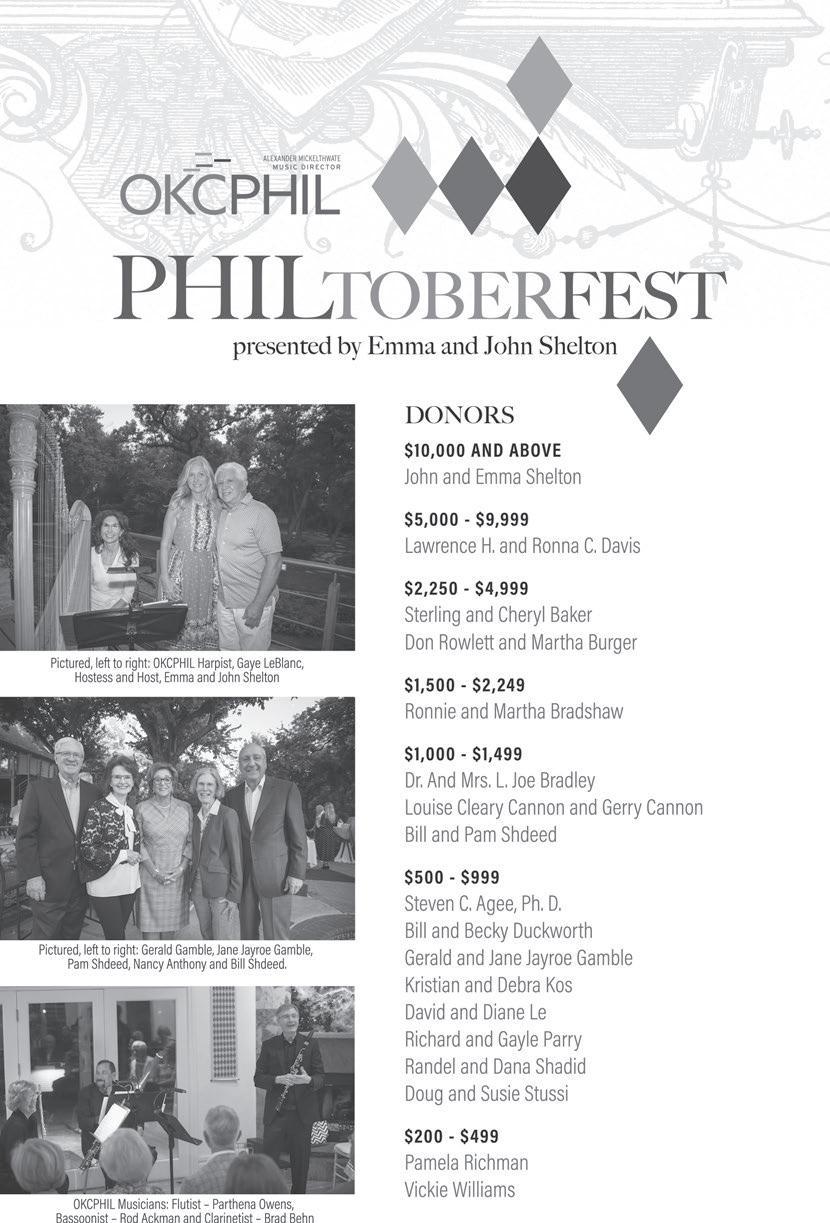


RESTROOMS are conveniently located on all levels of the theater. Please ask your usher for guidance.
LATECOMERS and those who exit the theater during the performance may be seated during the first convenient pause, as determined by the management.
ELECTRONIC DEVICES must be turned off and put away during the performance (no calling, texting, photo or video use please).
BEVERAGES: Bottled water is permitted in the theater at the Classics Series concerts. Beverages are permitted in the theater at the Pops Series concerts; however, bringing coffee into the theater is discouraged due to the aroma.
SMOKING in the Civic Center Music Hall is prohibited. The Oklahoma City Philharmonic promotes a fragrance-free environment for the convenience of our patrons.
FIRE EXITS are located on all levels and marked accordingly. Please note the nearest exit for use in case of an emergency.
ELEVATORS are located at the south end of the atrium lobby of the Civic Center Music Hall.
CHILDREN of all ages are welcome at the Philharmonic Discovery Family Series and Holiday Pops performances; however, in consideration of the patrons, musicians and artists, those under five years of age will not be admitted to evening Classics and Pops concerts unless otherwise noted.
BOOSTER SEATS for children are available in the Civic Center lobby. Please inquire at the Box Office.
STUDENT RUSH are $11 each and available with a high school or university I.D. and email address at the Box Office 1 hour prior to the start of each Philharmonic performance. Tickets are offered based on availability only and seats may be located throughout the theater.
VIDEO MONITORS are located in the lobby for your convenience.
WHEELCHAIR AVAILABLE SEATING – Persons using wheelchairs or with walking and climbing difficulties will be accommodated when possible. Those wishing to use the designated wheelchair sections may purchase the wheelchair space and a companion seat. Please inform the Philharmonic or Civic Center Box Office staff of your need when ordering tickets so that you may be served promptly and appropriately. Please request the assistance of hall ushers to access wheelchair seating.
HEARING LOOPS have been installed. Ask your audiologist to activate the telecoil in your hearing aid or cochlear implant. Due to the mechanics of the stage, the hearing loops do not reach the pit section but are available at the Box Office and the Thelma Gaylord Performing Arts Theatre. The copper wire in the floor and telecoil work together to connect the hearing device to the theater’s sound system using a magnetic field which dramatically improves sound clarity for patrons using hearing devices.
LOST & FOUND is located in the Civic Center office (405) 594-8300 weekdays 8:30 a.m. – 5:00 p.m.
PHILHARMONIC TICKET OFFICE may be contacted by calling 405-TIC-KETS (405) 842-5387 or you can visit the Philharmonic Ticket Office located on the first floor of the Arts District Garage at 424 Colcord Drive in Suite B. The Philharmonic Ticket Office is open Monday through Friday, 10:00 a.m. to 5:00 p.m. and by phone on concert Saturdays from 10:00 a.m. to 2:00 p.m.
CIVIC CENTER BOX OFFICE hours are Monday through Friday, 10:00 a.m. to 6:00 p.m. and two hours prior to each performance. (405) 594-8300
ARTISTS, PROGRAMMING, AND DATES SUBJECT TO CHANGE.
23
THIRTY-FOURTH SEASON
HOUSE NOTES
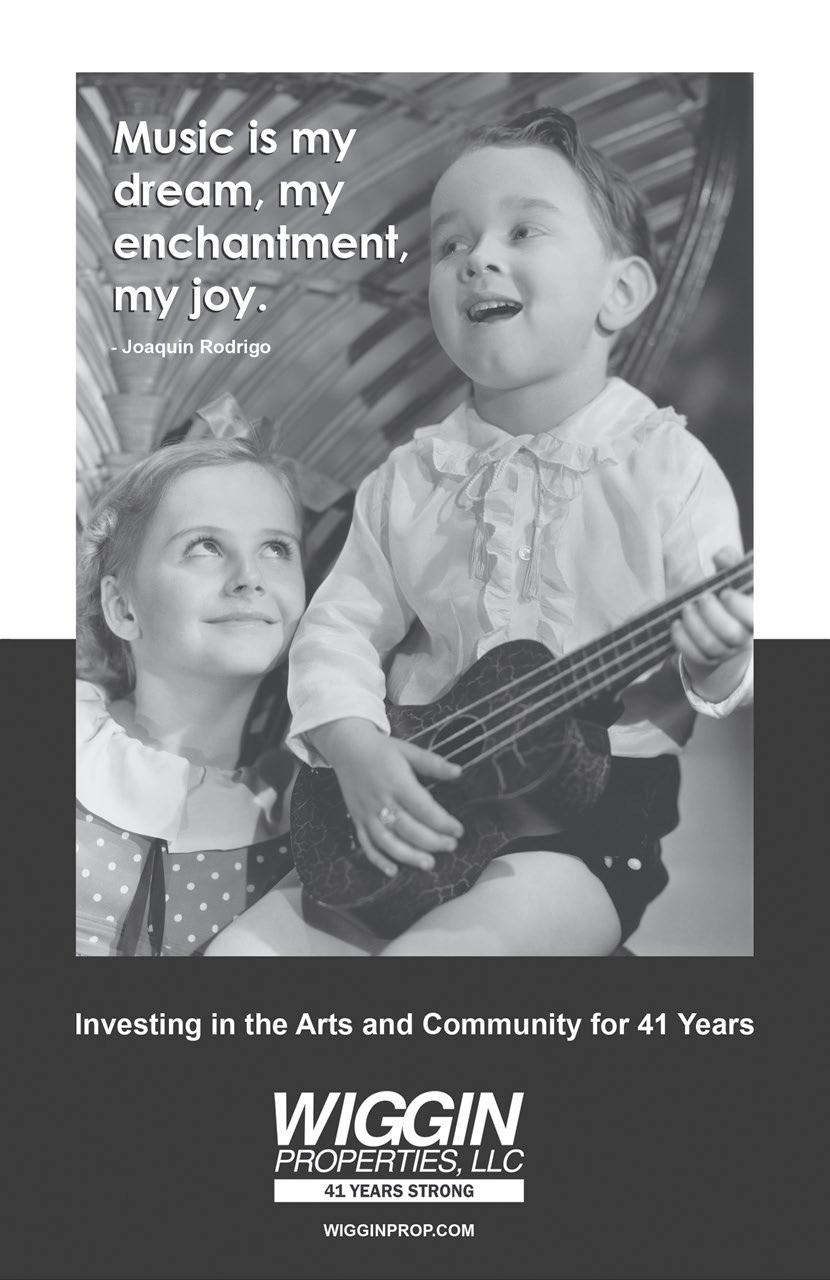
Music, to me personally, is the ultimate reflection of the inner feelings of the composer put into sounds. This season we will take you on a journey through multiple composers where you will experience an array of sounds and feelings. The canvas of each composer is literally alive ... we experience different instruments dominating the texture, from a single piano or guitar to the full Symphony Orchestra.
SIGHT AND SOUND
In “Sight and Sound,” we visit the work of Japanese composer Toru Takemitsu, who wrote many works, among them music to 90 films!
From Japan we cross over to China for Academy Award winning composer Tan Dun. He invented about 20 new percussion instruments from paper!
Our soloist for Sight and Sound is Evelyn Glennie.
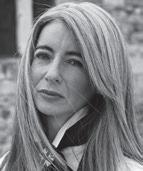
I have worked with Evelyn many times. While she has been profoundly deaf since age 12, it does not prohibit her from performing. As you will see and hear, playing with bare feet, the Grammy Award winner is a sorceress on her instruments.
The music in the second half is Mussorgsky’s Pictures at an Exhibition. The composition comes across as a casual Sunday afternoon art gallery stroll. Yet, something profound seems to be happening during the excursion. Transformative art?
TAKEMITSU .................... Three Film Scores*
Music of Training and Rest, from Jose Torres
Funeral Music, from Black Rain
Waltz, from Face of Another
TAN DUN ......................... Paper Concerto for Paper Percussion and Orchestra*
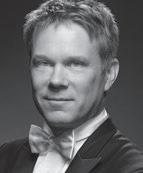
Adagio sensibile (attacca)
Allegro scherzo
Impetuoso (attacca)
Andante grazioso—Festivo
Evelyn Glennie, percussion
Intermission
MUSSORGSKY arr. Ravel ........... Pictures at an Exhibition
Promenade
Gnomus (Gnome)
Promenade
Il vecchio castello (The Old Castle)
Promenade
Tuileries
Bydlo (Polish Ox-cart)
Promenade
Ballet des poussins dans leurs coques (Ballet of the Unhatched Chicks)
Samuel Goldenberg und Schmuyle (Samuel Goldenberg and Schmuyle)
Limoges: Le marché (Limoges: Marketplace)
Catacombae: Sepulcrum Romanum (Catacombs: Roman Burial Place) (attacca)
Con mortuis in lingua mortua (With the Dead in a Dead Language)

La Cabane sur des pattes de poules: Baba-Yaga (The Hut on Chicken Feet: Baba-Yaga)
La grande porte de Kiev (The Great Gate at Kiev)
*First Performance on this series
In Memory of Dick Sias
THIS CONCERT IS GENEROUSLY SPONSORED BY:
MICKELTHWATE, CONDUCTOR EVELYN GLENNIE, PERCUSSION
THE
MARCH 4, 2023 • 8:00 P.M. 25
ALEXANDER
CLASSICS CONCEPTS FROM
Maestro SIGHT AND SOUND
Photo Credit Philipp Rathmer
EVELYN GLENNIE
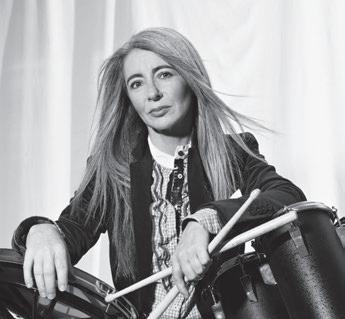

Dame Evelyn Glennie is the first person in history to create and sustain a full-time career as a solo percussionist, performing worldwide with the greatest orchestras and artists. Evelyn has commissioned over 200 new works for solo percussion and has recorded over 40 CDs. She regularly provides masterclasses and consultations to inspire the next generation of musicians.
Leading 1000 drummers, Evelyn had a prominent role in the Opening Ceremony of the London 2012 Olympic Games which also featured a new instrument, the Glennie Concert Aluphone.
Evelyn was awarded an OBE in 1993 and has over 100 international awards to date, including 2 GRAMMY’s, the Polar Music Prize and the Companion of Honour. She was appointed as the first female President of Help Musicians. Since 2021 she has been Chancellor of Robert Gordon University in Aberdeen, Scotland.
Evelyn curates for The Evelyn Glennie Collection which includes in excess of 3,500 percussion instruments. The film Touch the Sound, TED Talk and Listen World! book are key testimonies to her unique and innovative approach to sound-creation. In 2023, she continues her life-long mission to Teach the World to Listen by establishing The Evelyn Glennie Foundation, which aims to improve communication and social cohesion by encouraging everyone to discover new ways of listening in order to inspire, to create, to engage and to empower.
26
SIGHT AND SOUND
GUEST ARTIST
Photo Credit Caroline Purday
Photo Credit Philipp Rathmer
PROGRAM NOTES
Three Film Scores
Tōru Takemitsu

First Performance on this Series
Born: October 8, 1930, in Tokyo, Japan
Died: February 20, 1996, in Tokyo
Work composed: The three movements were composed respectively in 1959, 1989, and 1966, and were arranged into this suite in 1994-95
Work premiered: March 9, 1995, at the CineMusic Festival in Gstaad, Switzerland, with William Boughton conducting the English String Orchestra
Instrumentation: String orchestra
Tōru Takemitsu grew up amidst wartime deprivations, first during the Invasion of Manchuria (where his family was living) and Second Sino-Japanese War, then during World War II. He encountered Western popular music and jazz while working at a Tokyo food dept during World War II; and after the war, he enlivened many bed-bound months (as a tuberculosis patient) by listening to music, including classical works, on the U.S. Armed Forces radio network. He grew healthy enough to start congregating with likeminded music aficionados, gaining exposure to diverse masterpieces of modern European music, including Schoenberg’s Pierrot lunaire and Messiaen’s Quartet for the End of Time. He began essaying his own compositions and in 1950 received his first public performance at a concert organized by one of those musical circles. He caught the attention of the composer Fumio Hayasaka, famous for his film scores for Akira Kurosawa’s Rashōmon (1950) and later Shichinin no samurai/The Seven Samurai (1954), and was hired to copy scores for his film projects, an assignment that would fatefully usher Takemitsu himself into the world of film composition.
In 1964, Takemitsu made his first overseas trip as a composer, to an electronic music festival in San Francisco,
where he renewed his acquaintance with John Cage and David Tudor, both of whom he had met previously in Japan. Cage encouraged Takemitsu to investigate Japanese musical traditions, which Takemitsu had previously avoided out of preference for absorbing Western styles. The year 1965 found him in Paris spending time with Messiaen, the Greek composer Iannis Xenakis, and the Canadian composer R. Murray Schafer, all of whom provided important inspiration. In 1967 he was in New York as a guest of the John D. Rockefeller III Foundation; during his stay, the New York Philharmonic’s premiere of his November Steps catapulted him to the A-list. He would become the most widely honored of Japanese composers, receiving memberships in the Akademie der Künste of the DDR, American Institute of Arts and Letters, France’s Académie des Beaux-Arts (plus the Ordre des Arts et des Lettres), and Royal Academy of Music (England), as well as the prestigious Grawemeyer Award.
Takemitsu is admired internationally in the concert hall for his luminous orchestral and chamber works. His film scores are less widely known, Japanese cinema generally qualifying as “connoisseur fare’ outside of that country. In fact, he produced more than a hundred film scores, including for such acclaimed Japanese New Wave directors as Kurosawa (Ran), Masaki Kobayashi, Masahiro Shinoda, Hiroshi Teshigahara, and Shōhei Imamura. Takemitsu was a film fanatic. He estimated that he watched 300 movies per year, sometimes approaching them more as visual artworks than as narratives; he said that when traveling he would often seek out films in local languages, the dialogue of which he could not understand. Apart from the aesthetic pleasures it brought him, writing film scores provided enough income to free him from the need to teach at a university, as so many composers must. Film scores, he said, were his “liberty passport,” enabling him to be an independent composer.
In 1994-95 he assembled three excerpts from his film music into the suite titled Three Film Scores, arranged for string orchestra. The first movement, “Music for Training and Rest,” comes from Hozee Toresu/Jose Torres, a 1959 documentary—directed by Teshigahara—about a Puerto Rican boxer, filmed in New York City streets and gyms, for which Takemitsu provided jazz-inflected music. The second section, “Funeral Music,” comes from Imamura’s 1989 drama Kuroi ame/Black Rain, about a family living in the aftermath of the atomic bombing of Hiorshima. The film won a raft of Japanese Academy Awards, including for Best Music Score.
In the final movement we again encounter Takemitsu using a surprising vocabulary. It is taken from Kii no Kao/Face
27
SIGHT AND SOUND TAKEMITSU
PROGRAM NOTES
of Another, a 1966 film directed by Teshigahara, the story of a man who, after his face is disfigured in an explosion, is fitted with a mask that effects a drastic change in his personality. At once romantic and melancholy, “Waltz” underpins a scene in a German-Japanese bar (with German lyrics in the movie), resembling something from a Viennese operetta or perhaps from Shostakovich’s socalled “Jazz Suites.”
Takemitsu and Film
Given that Tōru Takemitsu’s concert works often reveal a penchant for delicate writing, one is surprised to find him explaining his enthusiasm for writing film scores in this way: “It’s because movies have erotic elements as well as violence. I don’t like things that are too pure and refined. I’m more interested in what’s real. And films are so full of life.” On another occasion he observed: “I often think of movies in terms of problems in sound. But I think sound and words can be understood at the level of images because it is in the movie that these things, images-words-sounds, exist somewhere outside ordinary time. ... I remarked that sound is also an image, but then that is a remark by a composer asserting himself in the area of moviemaking.” And elsewhere: “I only add music to give the audience a little help hearing the pure music that’s already there in the images—in other words, it is much more important to prune away the sound than to add more.”
—JMK
Paper Concerto for Paper Percussion and Orchestra
Tan Dun
First Performance on this Series
Born: August 18, 1957, in Simao, Hunan province, China
Residing: New York City
Work composed: 2003 on commission from the Los Angeles Philharmonic, as Inventions for Paper Instruments and Orchestra; revised in 2005 into Paper Concerto for Paper Percussion and Orchestra
Work premiered: In its original form, on October 16, 2003, at Walt Disney Concert Hall in Los Angeles, with Esa-Pekka Salonen conducting the Los Angeles Philharmonic and soloist David Cossin; in its revision, on April 28, 2005, with the same orchestra and soloist at the same venue, but with Miguel Harth-Bedoya conducting.
Instrumentation: Two flutes (one doubling bass flute), two oboes, clarinet and bass clarinet (doubling E-flat clarinet), bassoon and contrabassoon, two horns, two trumpets, two trombones, tuba, timpani (doubling paper strips and slapstick), orchestral paper percussion (two musicians playing two large paper screens, paper cymbals, large paper sheets, cardboard sheets, wax-paper bags, paper strips, tracing papers, and paper spinphones), harp, and strings, plus an array of paper percussion played by the soloist (large paper screen, tracing papers, paper cymbals, cardboard sheets, paper strips, wax-paper bags, paper head drums, cardboard tube drum, paper thunder tube, paper umbrella, paper box drums, paper spinphone, and Chinese folding paper fan)
Born in a village in central China, Tan Dun grew up surrounded by the shamanistic traditions of Chinese rural and small-town life. Hs life underwent a somersault with the onset of the Cultural Revolution. In the mid-1970s, he was ordered to live among peasants, and he spent two years planting rice. Nonetheless, his aptitude for music persisted, and he set about collecting folk songs and even (at the age of 17) conducting an ad hoc village music

28
SIGHT AND SOUND TAN DUN
PROGRAM NOTES
ensemble. Soon he was pressed into service as a string player and arranger for a provincial Beijing opera troupe, and in 1978, with the restoration of China’s educational system, he began to pursue his formal musical education at the Central Conservatory in Beijing.
As the political climate thawed, composers from outside China began to visit Beijing. Among those Tan Dun met were Alexander Goehr, George Crumb, Hans Werner Henze, Tōru Takemitsu, Isang Yun, and Chou Wen-Chung. From figures such as these he received his first exposure to not only their music but also the compositions of such central 20th-century Western masters as Bartók, Schoenberg, Stravinsky, and Boulez.
In the early 1980s, he began writing music that mixed Chinese and Western instruments, yielding what at that time were highly unorthodox combinations of sounds. Still, his political travail was not over. For six months in 1983, performance and broadcasting of his music was forbidden due to a national crackdown by hardline Chinese nationalists. Not long thereafter he moved to the United States, where he earned the Doctor of Musical Arts degree at Columbia University. His music began to reflect a more liberated attitude toward tonality as well as the intense discernment concerning nuances of tone color that continues to mark his work.
In 1998 he was awarded the Grawemeyer Awatrd and was named Musical America’s Composer of the Year. Other honors include an Oscar and a Grammy for his score for Ang Lee’s film Crouching Tiger, Hidden Dragon. In 2019, he began his position as dean of the Bard College Conservatory of Music.
His output ranges through many genres, including four operas: Marco Polo; Peony Pavilion; Tea: A Mirror of the Soul; and The First Emperor, which the Metropolitan Opera premiered in 2006. His orchestral catalogue includes numerous concertos. Some feature standard instruments—either Western (piano, guitar, cello, violin, double bass, trombone, percussion) or Chinese (erhu, pipa, zheng)—but three highlight his fascination with exploring the musical possibilities of naturalistic materials: his Water Concerto for Water Percussion and Orchestra (1998), Paper Concerto for Paper Percussion and Orchestra (2003/05), and Earth Concerto for Earth Instruments [i.e., stone and ceramic percussion] with Orchestra (2009). By way of explaining such works, Tan Dun says: “For a long time, I have been developing the idea of organic music, which embodies sounds of nature, water, paper, ceramics, and the mind. The environment is related to our lives, and spiritually, everything germinates from one seed of
creativity.” And about the Paper Concerto in particular, “We are surrounded by paper in our lives: our imaginations are captured and recorded in words or pictures, as we express newly discovered feelings about ourselves and the world around us.”
The Paper Concerto will offer a novel experience for most listeners. The idea of deriving musical sounds from various forms of paper may seem strange at first glance, but it would not be entirely foreign to percussionists, who are accustomed to extracting precise gradations of sound from all sorts of objects. Tan Dun invites them to think deeply about the paper instruments. “You have to know how paper was made,” he says, “and explore what kind of sound it makes. You have to prepare the instruments [and continue by] rehearsing the instruments, performing the piece, and hearing it from the audience point of view. All of these are organic experiences.” Audience members are likely to be struck by how the percussionist’s art is to a certain extent an art of choreography, the execution of meticulously planned and coordinated movements that achieve specific musical results.
From the Composer
In an interview conducted when the Los Angeles Philharmonic introduced the Paper Concerto two years after it gave the world premiere of its original version (under the title Inventions for Paper Instruments and Orchestra), Tan Dun discussed how the work had evolved into its final form:
The revision comes out of the first experience of hearing the [Los Angeles] Philharmonic’s premiere. There was no example of how an orchestra would sound with paper, and that performance provided enormous feedback in terms of inspirations and techniques. The four movements now incline more toward a symphonic structure. The first two movements have been completely rewritten. The first movement is more like a ritual; the second is more like a scherzo. The third movement is like an adagio, with a dark side—violent contrasts, like a thunderstorm. The fourth movement is like a festival.
I have two goals in my heart. I don’t just want to establish a musical idea; I also want to change musical institutions. I want to develop
29
SIGHT AND SOUND
CONTINUED ON PAGE 30
PROGRAM
a cross-cultural idea that brings nature and classical music, ancient and modern, together. The question everyone is asking today is how we can broaden our audience and make it more diverse, and I believe these kinds of musical practices are an answer. It’s not just a small group doing something experimental. It’s using the institution of classical music, the orchestra, to communicate to a mass audience.
drum, whip, ratchet, cymbals, bass drum, tam-tam, glockenspiel, orchestra bells, xylophone, two harps, celesta, and strings
As a child, Modest Mussorgsky gained enough keyboard skill to perform a piano concerto by John Field when he was only nine. Before he finished preparatory school and embarked on a brief career in the military, he was familiar with a considerable range of mainstream European piano repertoire. An important strand of 19th-century piano music involved groups of miniatures gathered together into suites. Many of these collections were simply a succession of musically unrelated pieces, but in some cases, such as Schumann’s Carnaval, composers recalled musical motifs as the piece progressed. That is what Mussorgsky did in Pictures at an Exhibition, where a “Promenade” theme provides continuity among the movements.

Pictures at an Exhibition
Modest Mussorgsky, arr. Maurice Ravel
First Performance:2/26/1950
Conductor: Victor Alessandro
Last Performance: 5/14/2016
Conductor: Joel Levine
Born: March 9 (old style)/21 (new style), 1839, in Karevo, Pskov district, Russia
Died: March 16/28, 1881, in St. Petersburg, Russia
Work composed: June 2/14 to June 22/July 4, 1874, as a set of piano pieces
Version performed: The orchestration made from May to Autumn 1922 by Maurice Ravel (born March 7, 1875, in Ciboure, BassesPyrenées, France; died December 28, 1937, in Paris)
Work premiered: Ravel’s orchestration was premiered October 19, 1922, with Serge Koussevitzky conducting at the Paris Opéra Instrumentation: Three flutes (two doubling piccolos), three oboes (one doubling English horn), two clarinets and bass clarinet, alto saxophone, two bassoons and contrabassoon, four horns, three trumpets, three trombones, tuba, timpani, triangle, snare
Pictures at an Exhibition—originally a piano suite—was inspired by a group of images by Victor Hartman, an architect and designer who, beginning in 1870, became one of Mussorgsky’s closest friends and who died in the summer of 1873 at the age of 39. Mussorgsky had dedicated to him the song “In the Corner” from his song cycle The Nursery. In February and March 1874, a memorial exhibit was mounted at St. Petersburg’s Academy of Artists; it included Hartman’s architectural drawings as well as designs for craft pieces, jewelry, and so on—some four hundred works in all. Among the items on display, according to the critic Vladimir Stasov, were “lively, elegant sketches by a genre-painter, the majority depicting scenes, characters, and figures out of everyday life, captured in the middle of everything going on around them: on streets, and in churches, in Parisian catacombs and Polish monasteries, in Roman alleys and in villages around Limoges.”
We don’t know exactly when Mussorgsky visited the exhibit or when he settled on the concept of creating musical equivalents to a number of the pictures. In 1903, Stasov claimed in a letter that it had actually been his idea, and that he had even suggested the topics of the movements, but there is no further evidence to corroborate his claim. Only six of the relevant Hartman drawings have been ascertained beyond a doubt. Mussorgsky’s other movements seem to be of specific images that have since strayed, or they may be composites of various pictures. The subjects range from the eeriness of a medieval Italian castle to the liveliness of children playing in the Tuileries gardens, and they culminate in a diptych of Slavic scenes—the macabre witch Baba-Yaga of folk legend and the glowing depiction of the Gate at Kiev (Mussorgsky
NOTES SIGHT AND SOUND MUSSORGSKY
30
—JMK
PROGRAM NOTES
used the city’s Russian spelling, rather than the Ukrainian “Kyiv”), an architectural extravaganza designed to honor Tsar Alexander II but never constructed. The recurring “Promenade” theme suggests the viewer strolling from one picture to the next. Mussorgsky produced his score in a sprint of inspiration, apparently in the course of about twenty days. The final page of his manuscript is dated June 22, 1874, and five days later he signed off on all the score’s details and inscribed a dedication to Stasov.
The most famous orchestration of Mussorgsky’s piano suite was created in 1922 by Maurice Ravel. When he encountered this work, Ravel shared his enthusiasm with the conductor Serge Koussevitzky, who, curiously, was not familiar with this masterpiece of his Russian compatriot. Koussevitzky commissioned Ravel to create an orchestral transcription of the suite, reserving exclusive performance rights for himself for some years, during which he conducted it often and ushered it into a niche of honor in the symphonic repertoire. A number of other orchestral versions have been produced over the years, mostly by conductors, including Mikhail Tushmalov, Henry Wood (under the pseudonym “Klenovsky”), Leopold Stokowski, Walter Goehr, Leo Funtek, Sergei Gorchakov, and Vladimir Ashkenazy. Some arguably capture a more authentically “Russian” sound, but it is Ravel’s against which all others are measured.
Ravel Makes Do
When Maurice Ravel became acquainted with Mussorgsky’s piano suite Pictures at an Exhibition, it was through the edition that Nikolai Rimsky-Korsakov had published through the Bessel Publishing Company in 1886, the only edition then in print. Ravel realized that it veered from Mussorgsky’s original—by what extent he could not be sure—and he made efforts to lay his hands on something closer to the source. On February 3, 1922, he wrote to his friend MichelDimitri Calvocoressi, a French critic who was deeply involved in Russian musical circles: “I was expecting a copy of Pictures at an Exhibition, in Mussorgsky’s original edition. Now, this minute I received a notice that it cannot be procured. Do you have one, and could you lend it to me for a while? Or do you know anyone who could do me this favor?” Calvocoressi regretted that he was unable to help.
It remained impossible to gain an accurate assessment of how much alteration RimskyKorsakov had imposed until 1975, when the Soviet Union allowed a facsimile of Mussorgsky’s manuscript to be published. Now we know that Rimsky-Korsakov’s emendations were minor, and that if Ravel had been successful in his quest for a “purer” edition, the musical text wouldn’t have been much different from what he already had.
—JMK
JAMES M. KELLER
James M. Keller is the longtime Program Annotator of the San Francisco Symphony and was formerly Program Annotator of the New York Philharmonic and a staff writer-editor at The New Yorker. The author of Chamber Music: A Listener’s Guide (Oxford University Press), he is writing a sequel volume about piano music. Portions of these notes previously appeared in the programs of the New York Philharmonic and are used with permission.

31
SIGHT AND SOUND


THE TEXAS TENORS

MARCH 17-18, 2023, 8:00 P.M.


MATTHEW TROY, CONDUCTOR

PROGRAM TO BE ANNOUNCED FROM THE STAGE
THIS CONCERT IS GENEROUSLY SPONSORED BY:


33
JC Fisher John Hagen Marcus Collins featuring Josh Hanlon, piano • Larry Hanson, guitars • Pete Generous, drums
MATTHEW THOMAS TROY
Matthew Thomas Troy is currently the Music Director of the Western Piedmont Symphony (NC) and is a conductor with a mission to make classical music accessible to everyone and program concerts that are socially meaningful and relevant. He has conducted orchestras across the country including the North Carolina Symphony, Rochester Philharmonic, Oklahoma City Philharmonic, Portland Symphony, Greensboro Symphony, Oklahoma Virtuosi Chamber Orchestra, Gate City Camerata, Northern Lights Chamber Orchestra (AK), University of North Carolina School of the Arts Symphony, Wake Forest University Symphony, Fibonacci Chamber Orchestra, Salisbury Symphony and others. Maestro Troy previously served as the Associate Conductor with the WinstonSalem Symphony. Troy also held the position of Music Director of the Piedmont Wind Symphony from 2015 – 2019 where he transformed this organization and received many accolades for these successes. From 2010 – 2022 Troy served as Education Conductor of the Oklahoma City Philharmonic, where he led the Discovery Family Series, educational concerts, Carnegie Hall’s Link Up concerts, and other outreach efforts. He has also conducted the Oklahoma City Philharmonic on Pops and Classics concerts. Troy has led performances with many internationally renowned pops and classical artists including Jennifer Koh, Ben Folds, Boyz II Men, Pink Martini, Dee Dee Bridgewater, Midori, Judy Collins, Anthony Dean Griffey, Eileen Ivers, The Wailers, Tai Murray, Bryan Wallick, and many others.
Maestro Troy is known for innovative programming and partnerships, deep community involvement, and support for music education. He is recognized for creating an instant rapport with both orchestras and audiences, and for his unique ability to make classical music engaging and relevant to today’s audiences. Troy has pushed boundaries through a number of film and music projects. In April 2018 he crafted a program called Music Without Borders, which focused on the ongoing refugee crisis both locally and abroad. This concert included music and partnerships for many countries affected by these issues, including a partnership with World Relief and local interfaith groups. Troy has commissioned new works, performed countless clinics supporting local music teachers, and created programs and received funding for outreach into local prison systems. The 2017 – 2018 season saw the creation of the Female Fanfare Project with the Piedmont Wind Symphony, which included the important contribution of female composers.
Troy is a passionate advocate for orchestral music and music education. As a viola/violin faculty member at the Music Academy of North Carolina, he received awards for excellence in teaching. Troy is a frequent conductor/clinician and has led numerous high school and middle school All-State and All-County clinics throughout the United States. From 2015 – 2018 Troy served as conductor of the Cannon Music Camp, where he also played viola in the faculty string ensemble. One of Troy’s most creative projects at the Winston-Salem Symphony was an educational program that partnered the orchestra with a San Francisco-based non-profit organization called the African Library Project. This program, created in conjunction with the educational concert series and a corresponding short story competition, used music to focus on the importance of literacy both locally and abroad. Through this program, Troy raised over 50,000 books to start 50 new libraries for schools in Botswana, while allowing three students in Winston-Salem the opportunity to receive new instruments and music lessons. This program garnered national attention and Troy was invited to lead a presentation on the project at the 2010 League of American Orchestras conference in Atlanta.
Troy earned a bachelor’s degree in music at UNC-Greensboro, where he also completed his master’s degree in orchestral conducting as a student of Maestro Robert Gutter. He has studied at the prestigious Pierre Monteux School under Maestro Michael Jinbo and with renowned conducting pedagogues Maestro Gerard Schwarz and Maestro Kenneth Kiesler at the Conductors Retreat at Medomak and competed in the Jordanian International Conducting Competition. In his free time, he enjoys reading, studying new music, traveling, and singing.

34
THE TEXAS TENORS
GUEST CONDUCTOR
THE TEXAS TENORS

Recent 2022 Texas Country Music Hall of Fame Inductees, The Texas Tenors, are considered one of the most successful music groups and third highest selling artists in the history of America’s Got Talent! Since appearing on the series in 2009, JC, Marcus and John have released 5 studio albums, 2 PBS Specials, 4 DVDs, multiple singles and a children’s book that have earned them impressive recognition including 3 Emmy Awards, The Gelett Burgess Award for Excellence in Children’s Literature and the distinction of being Billboard Magazine’s #10 Classical Artist in the World. The tenors most recent albums “Outside the Lines”, “Rise” and “A Collection of Broadway and American Classics” all debuted at #1 on the Billboard Charts.

These classically trained, versatile tenors have performed more than 1700 concerts around the world including headline shows in Las Vegas, China and a 24-city tour of the United Kingdom.
The Texas Tenors’ concerts appeal to all ages and have been wildly successful from performing arts centers, casinos and symphony halls to outdoor festivals and corporate events. In addition to collaborations with some of the most prestigious symphonies in the world including the Houston Symphony, Pittsburgh Symphony and The City of Prague Orchestra, The Texas Tenors have performed at The White House National Tree Lighting, Congressional Medal of Honor Ceremonies, numerous charity events, NBA games and The PBR World Finals in Las Vegas.
Recently they were honored to be included among the top 50 acts in the world and the only vocal group from the United States invited to appear on NBC’s America’s Got Talent: The Champions.
JC FISHER
JC has entertained audiences around the world for the past 15 years. In high school, he had a passion for sports and also enjoyed singing in church. He discovered a deeper love for singing at Wichita State University where he earned his Bachelor’s Degree in Music. JC performed various roles including Rodolfo in La Boheme, Tamino in The Magic Flute, Ernesto in Don Pasquale, Henrick in A Little Night Music and even Miss America’s duet partner at the 1997 Miss Kansas Pageant. After college, JC traveled to Lucca, Italy where he sang in the Puccini festival under the direction of acclaimed Italian maestro Lorenzo Malfatti. He then created a home base in Katy, TX before sailing the high seas aboard more than 75 cruise ships worldwide as a guest entertainer. This allowed JC to create a show featuring many different genres of music and world class arrangements, which eventually led to his idea of forming The Texas Tenors. After many years of traveling and concerts, his most memorable performance is still one from college where he found his future wife and mother of their 3 beautiful children.
35
THE TEXAS TENORS
GUEST ARTISTS
JOHN HAGEN
John has been described as, “astonishing, a superb tenor of deep musicality.” He made his Lincoln Center debut in New York City in Teatro Grattacielo’s mounting of Mascagni’s Gulglielmo Ratcliff. Mr. Hagen created 3 tenor roles in the world premier of The Lost Dauphane for Pamiro Opera airing on PBS. He has performed a vast array of operatic roles ranging from Alfredo in La Traviata, to the title role of Otello for Cleveland Opera on tour. Mr. Hagen is highly regarded for his performances of the Verdi Requiem and Beethoven’s Symphony No. 9, having performed these works with more than a dozen symphonies across the United States. He has received many awards throughout his career including finalist in the New Jersey Opera Association of Verismo Opera competition held at Carnegie Hall, Metropolitan Opera Auditions Regional Finalist, and winner of numerous other competitions

MARCUS COLLINS
Marcus was born in a small town and began performing at the age of 4. He first learned how to sing by emulating his favorite artists like Garth Brooks, George Michael and Freddie Mercury before training classically in college. Marcus has performed throughout the world on cruise ships and numerous stage productions including a performance in Times Square with the Broadway cast of Hairspray and Off-Broadway’s Altar Boyz as Matthew. Beyond music he has worked extensively as an actor with appearances in more than 100 episodes of network television and 25 films including P.S. I Love You, Semi-Pro, Delirious, 30 Rock, Sex and the City, recurring roles on One Life To Live and As The World Turns, and a Guest VJ on MTV.

THE TEXAS TENORS
GUEST ARTISTS
36

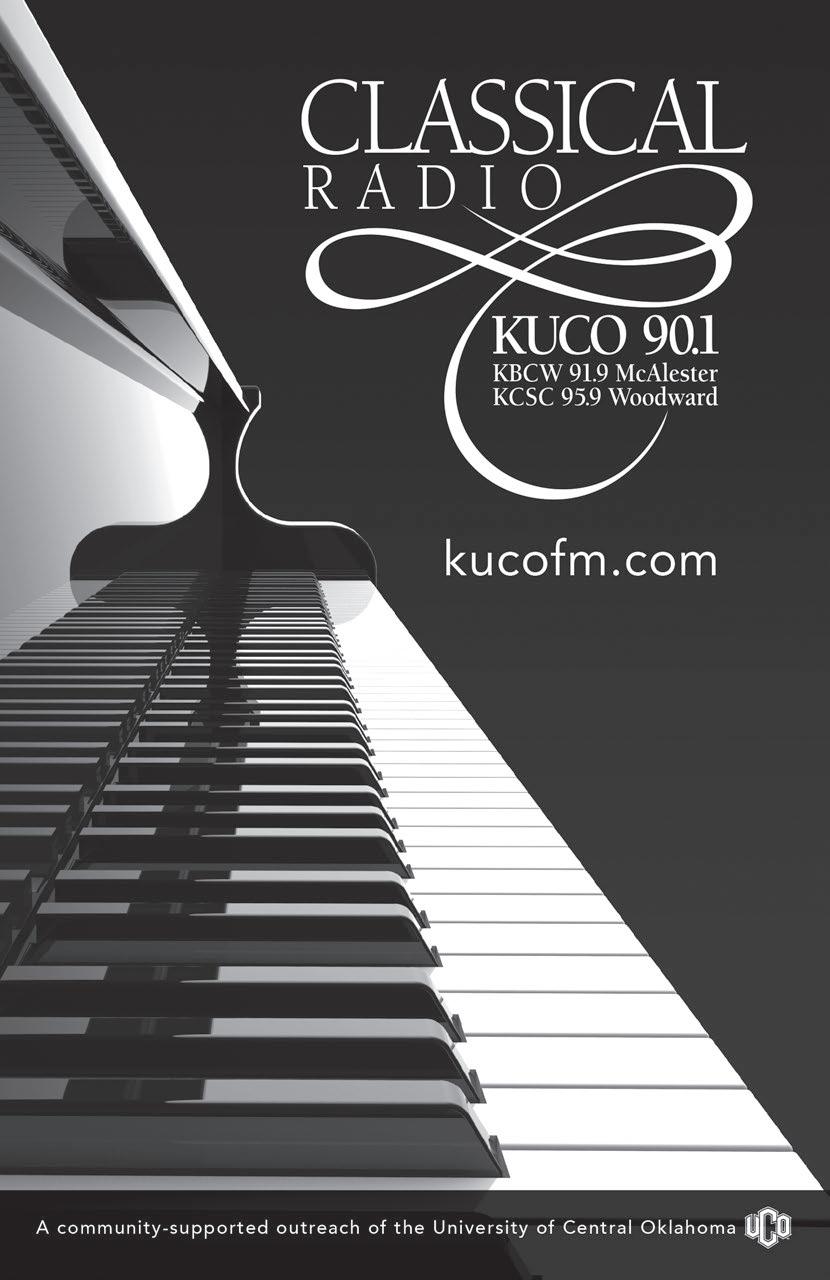
Music, to me personally, is the ultimate reflection of the inner feelings of the composer put into sounds. This season we will take you on a journey through multiple composers where you will experience an array of sounds and feelings. The canvas of each composer is literally alive ... we experience different instruments dominating the texture, from a single piano or guitar to the full Symphony Orchestra.
What is greatness? Does this even exist in our times of “Speaking MY truth?” Beethoven spoke HIS truth by zoning in to the essence of an idea and then sticking with it. A master artist creating an architecture of sound and pure energy.
The first movement of his Symphony No. 7 is based on a one-note rhythmical pattern. Celebrating the individual heart beat coming straight out of the French Revolution. The second movement is a goodbye to the 18th century, welcoming the 19th century. And what a welcome it is in the fourth movement. Full speed ahead.
So, what is greatness? A performer’s greatness comes with his or her ability of deep concentration, being in the zone. Open to possibilities in this very moment. That’s what I experienced with Joshua Bell a few years ago. Authentic obsession to detail, full ownership and then being in the moment, creating anew.

ALEXANDER MICKELTHWATE, CONDUCTOR

MENDELSSOHN ............ Violin Concerto in E minor, Op. 64
Allegro molto appassionato
Andante
Allegretto ma non troppo—Allegro molto vivace
(The movements are played without pauses between.)
Joshua Bell, violin

BEETHOVEN ................. Symphony No. 7 in A major, Op. 92
Poco sostenuto—Vivace
Allegretto
Presto
Allegro con brio
This concert is performed without an intermission
THIS CONCERT IS GENEROUSLY SPONSORED BY:
In Memory of Paul Silverstein
 Joshua Bell appears by arrangement with Park Avenue Artists (www.parkavenueartists.com) and Primo Artists (www.primoartists.com). Mr. Bell records exclusively for Sony Classical - a MASTERWORKS label.
Joshua Bell appears by arrangement with Park Avenue Artists (www.parkavenueartists.com) and Primo Artists (www.primoartists.com). Mr. Bell records exclusively for Sony Classical - a MASTERWORKS label.
APRIL 15, 2023 • 8:00 P.M. 39
JOSHUA BELL, VIOLIN
CLASSICS CONCEPTS FROM THE Maestro JOSHUA BELL
JOSHUA BELL
GUEST ARTIST
JOSHUA BELL
JOSHUA BELL
With a career spanning almost four decades, GRAMMY® Award-winning violinist Joshua Bell is one of the most celebrated artists of his era. Having performed with virtually every major orchestra in the world, Bell continues to maintain engagements as soloist, recitalist, chamber musician, conductor and Music Director of the Academy of St Martin in the Fields.

Bell’s highlights in the 2022-23 season include leading the Academy of St Martin in the Fields on tour in South America to Sao Paulo, Bogotá, and Montevideo as well in Europe, in Germany, Italy, Luxembourg, Denmark, and the United Kingdom. Joshua appears in guest performances with the Berlin Philharmonic, Orchestre National de France, Sofia Philharmonic, Franz Schubert Filharmonia as well as a European tour with pianist Peter Dugan. This season in the U.S., Bell will perform alongside the New York Philharmonic, as well as the San Francisco, Pittsburgh, Houston, Baltimore, and New Jersey Symphony Orchestras.
In 2011, Bell was named Music Director of the Academy of St Martin in the Fields, succeeding Sir Neville Marriner, who formed the orchestra in 1959. Bell’s history with the Academy dates back to 1986, when he first recorded the Bruch and Mendelsohn concertos with Mariner and the orchestra. Bell has since directed the orchestra on several albums, including Vivaldi’s Four Seasons, Voice of the Violin, For the Love of Brahms, and most recently, Bruch: Scottish Fantasy, which was nominated for a 2019 GRAMMY® Award.
In summer 2020, PBS presented Joshua Bell: At Home With Music, a nationwide broadcast produced entirely in lockdown, directed by Tony and Emmy award winner Dori Berinstein. The program included core classical repertoire as well as new arrangements of beloved works, including a West Side Story medley. The special features guest artists Larisa Martínez, Jeremy Denk, Peter Dugan, and Kamal Khan. In August 2020, Sony Classical released the companion album to the special, “Joshua Bell: At Home With Music”.
Bell has been active in commissioning new works from living composers and has premiered works by John Corigliano, Edgar Meyer, Behzad Ranjbaran and the Nicholas Maw Violin Concerto, for which his recording received a GRAMMY® award.
Bell has also collaborated with artists across a multitude of genres. He has partnered with peers including Renée Fleming, Chick Corea, Regina Spektor, Wynton Marsalis, Chris Botti, Anoushka Shankar, Frankie Moreno, Josh Groban, and Sting, among others. In 2019, Bell joined his longtime friends and musical partners, cellist Steven Isserlis and pianist Jeremy Denk, for a ten-city American trio tour; the trio recorded Mendelssohn’s piano trios at Capitol Studios in Hollywood, slated for release next season. Following Bell’s second collaboration with the Singapore Chinese Orchestra and Maestro Tsung Yeh in 2018, an upcoming album release features Bell as soloist alongside traditional Chinese instruments performing Western repertoire and the Butterfly Lovers’ Violin Concerto, one of the most renowned violin works in Chinese cultural heritage.
40
GUEST ARTIST
JOSHUA BELL
In 1998, Bell partnered with composer John Corigliano and recorded the soundtrack for the film The Red Violin, which elevated Bell to a household name and garnered Corigliano an Academy Award. Since then, Bell has appeared on several other film soundtracks, including Ladies in Lavender (2004) and Defiance (2008). In 2018-19, Bell commemorated the 20th anniversary of The Red Violin (1998), bringing the film with live orchestra to various festivals and the New York Philharmonic.
Bell has also appeared three times as a guest star on The Tonight Show with Johnny Carson and made numerous appearances on the Amazon series Mozart in the Jungle. Bell is featured on a total of six Live From Lincoln Center specials, as well as a PBS Great Performances episode, “Joshua Bell: West Side Story in Central Park.”
In August 2021, Bell announced his new partnership with Trala, the tech-powered violin learning app, which Bell will work with to develop a unique music education curriculum. Bell maintains active involvement with Education Through Music and Turnaround Arts, which provide instruments and arts education to children who may not otherwise experience classical music firsthand. In 2014, Bell mentored and performed alongside National YoungArts Foundation string musicians in an HBO Family Documentary special, “Joshua Bell: A YoungArts Masterclass.” Bell received the 2019 Glashütte Original MusicFestivalAward, presented in conjunction with the Dresden Music Festival, for his commitment to arts education.
Bell’s interest in technology led him to partner with Embertone, the leading virtual instrument sampling company, on the Joshua Bell Virtual Violin, a sampler created for producers, engineers, artists, and composers. Bell also collaborated with Sony on the Joshua Bell VR experience. Featuring Bell performing with pianist Sam Haywood in full 360-degrees VR, the software is available on Sony PlayStation 4 VR.
As an exclusive Sony Classical artist, Bell has recorded more than 40 albums, garnering GRAMMY®, Mercury® , Gramophone and OPUS KLASSIK awards. Bell’s 2019 Amazon Originals new Chopin Nocturne arrangement was the first classical release of its kind on Amazon Music. Bell’s 2016 release, For the Love of Brahms, features recordings with the Academy, Steven Isserlis, and Jeremy Denk. Bell’s 2013 album with the Academy of St Martin in the Fields, featuring Bell directing Beethoven’s Fourth and Seventh symphonies, debuted at No. 1 on the Billboard charts.
In 2007, a Pulitzer Prize-winning Washington Post story, centered on Bell performing incognito in a Washington, D.C. metro station, sparked an ongoing conversation regarding artistic reception and context. The feature inspired Kathy Stinson’s 2013 children’s book, The Man With The Violin, and a newly-commissioned animated film, with music by Academy Award-winning composer Anne Dudley. Stinson’s subsequent 2017 book, Dance With The Violin, illustrated by Dušan Petričić, offers a glimpse into one of Bell’s competition experiences at age 12. Bell debuted The Man With The Violin festival at the Kennedy Center in 2017, and, in March 2019, presented a Man With The Violin family concert with the Seattle Symphony.
Born in Bloomington, Indiana, Bell began the violin at age four, and at age twelve, began studies with his mentor, Josef Gingold. At age 14, Bell debuted with Riccardo Muti and the Philadelphia Orchestra, and made his Carnegie Hall debut at age 17 with the St. Louis Symphony. At age 18, Bell signed with his first label, London Decca, and received the Avery Fisher Career Grant. In the years following, Bell has been named 2010 “Instrumentalist of the Year” by Musical America, a 2007 “Young Global Leader” by the World Economic Forum, nominated for six GRAMMY® awards, and received the 2007 Avery Fisher Prize. He has also received the 2003 Indiana Governor’s Arts Award and a Distinguished Alumni Service Award in 1991 from the Jacobs School of Music. In 2000, he was named an “Indiana Living Legend.”
Bell has performed for three American presidents and the justices of the Supreme Court of the United States. He participated in former president Barack Obama’s Committee on the Arts and Humanities’ first cultural mission to Cuba, joining Cuban and American musicians on a 2017 Live from Lincoln Center Emmy nominated PBS special, Joshua Bell: Seasons of Cuba, celebrating renewed cultural diplomacy between Cuba and the United States.
Bell performs on the 1713 Huberman Stradivarius violin.
41
Violin Concerto in E minor, Op. 64
Felix Mendelssohn
First Performance: 2/9/1947
Violin: Zino Francescatti
Last Performance: 3/25/2017
Violin: Chloe Hanslip
Born: February 3, 1809, in Hamburg, Germany
Died: November 4, 1847, in Leipzig, Germany
Work composed: July to September 16, 1844, with alterations continuing for several more months
Work premiered: March 13, 1845, at the Leipzig Gewandhaus with Ferdinand David (its dedicatee) as soloist and Niels Gade conducting
Instrumentation: Two flutes, two oboes, two clarinets, two bassoons, two horns, two trumpets, timpani, and strings, in addition to the solo violin
As a youngster, Felix Mendelssohn benefited from an exemplary education and myriad other advantages reserved for the privileged. He mastered Classical and modern languages, wrote poetry, and polished his considerable skills as a landscape painter and an artist in pen-and-ink. His musical education included private lessons in piano and violin, as well as composition lessons from Carl Friedrich Zelter, whose other students included Otto Nicolai, Carl Loewe, and Giacomo Meyerbeer. Zelter spoke highly of Mendelssohn’s ability with the fiddle. In an 1823 letter to Goethe (whom Zelter served as musical adviser), he reported: “My Felix has entered upon his fifteenth year. He grows under my very eyes. His wonderful pianoforte playing I may consider as quite exceptional. He might also become a great violin player.”

Many of the composer’s early works were unveiled at Sunday musicales at his family’s mansion at 3 Leipziger Strasse in Berlin: among them were a number of his 12
string symphonies, some light operas, and a quantity of piano pieces and chamber music. Concertos were played, too, including the five (!) that Mendelssohn produced between 1822 and 1824: one for piano, one for violin (in D minor, written expressly for his violin teacher, Eduard Rietz), two for two pianos, and one for violin and piano. These works exhibit abundant inspiration, limitless enthusiasm, and genuinely remarkable technique; what they do not yet display is the stringent self-criticism and editing to which Mendelssohn would later subject his work.
Mendelssohn first met the violinist Ferdinand David, who would premiere the concerto heard here, in 1825. The two became fast friends. David (1810-73), just a year younger than Mendelssohn, was also the son of a wealthy businessman, was a musical prodigy, and had a precocious piano-playing sister, just as Mendelssohn did. He and Mendelssohn were frequent partners in chamber music and, in 1835, when Mendelssohn settled in Leipzig to become conductor of the Gewandhaus Orchestra, he appointed David concertmaster of that ensemble—a position David retained for the rest of his life. When Mendelssohn founded the Leipzig Conservatory, in 1843, David was one of the first musicians appointed to the faculty. Greatly respected as a teacher, he counted such eminent violinists as Joseph Joachim and August Wilhelmj among his pupils.
In March 1845, David played the premiere of Mendelssohn’s enduringly popular E-minor Violin Concerto, which the composer had contemplated writing as early as 1838. “I’d like to do a violin concerto for you for next winter,” he wrote to David on July 30 of that year. “One in E minor is running through my head, and the opening of it will not leave me in peace.” Curiously, ensuing sketches reveal that it was a piano concerto, rather than a violin concerto, that started taking form, one that matched the eventual violin concerto in both key and structure. By the time Mendelssohn focused definitively on the composition in 1844 it had evolved with certainty into a violin concerto. As he composed it, he consulted closely with his soloist, mostly about technical issues but in some cases concerning more general matters of structure and balance—and he took David’s suggestions to heart. They remained close friends until Mendelssohn’s passing in 1847, when David was among the small group attending Mendelssohn’s deathbed and served as a pall-bearer at the funeral. He lived another 26 years, and his final public appearance (in March 1873) was playing a chamber music program that included the Andante and Scherzo from Mendelssohn’s posthumously published Op. 81 collection of standalone quartet movements.
PROGRAM NOTES JOSHUA BELL
MENDELSSOHN 42
PROGRAM NOTES
JOSHUA BELL
Mendelssohn grew fond of dovetailing the separate movements of his large-scale pieces, a device he had used to great effect in the two piano concertos of his maturity. He maintains that preference in this last of his orchestral works, such that the three movements connect into a single span. Subtle mirroring of tonal architecture and fleeting reminiscences of earlier themes at key moments of transition help invest a sense of the organic and inevitable in this most Classical of the great Romantic violin concertos.
The Cadenza
Most concertos include cadenzas, unaccompanied sections in which soloists demonstrate their technical prowess while manipulating themes from the body of the piece. In the 18th and veryearly-19th centuries these sections were usually improvised (at least ostensibly) by the soloist, but in the course of the 19th century it became normal for composers to write out their suggestions for cadenzas, allowing soloists to decide whether to follow those ideas or invent their own. Although Mendelssohn wrote out the first-movement cadenza in his E-minor Violin Concerto, he maintained an element of surprise by inserting it considerably earlier in the movement than one would expect—most first-movement cadenzas fall just before the end—and by dovetailing its beginning and end with the ongoing flow of the movement. When the score was published, it included not that original cadenza (which some consider too “brainy” in its contrapuntal complexity) but rather a slightly streamlined version adjusted by Ferdinand David (who played the work’s premiere), and it is David’s adaptation that remains standard today. Joshua Bell, however, has created his own cadenza, an option that honors the spirit of what cadenzas were intended to be and that invites audiences to listen with fresh ears..
—JMK
Symphony No. 7 in A major, Op. 92 Ludwig van Beethoven
First Performance: 11/25/1940
Conductor: Victor Alessandro
Last Performance: 11/20/2010
Conductor: Joel Levine
Born: Probably on December 16, 1770 (he was baptized on the 17th), in Bonn, then an independent electorate of Germany
Died: March 26, 1827, in Vienna, Austria
Work composed: 1811 through April 13, 1812
Work premiered: December 8, 1813, at the University of Vienna, with Beethoven conducting

Instrumentation: Two flutes, two oboes, two clarinets, two bassoons, two horns, two trumpets, timpani, and strings
The Age of Beethoven coincided in large part with the Age of Napoleon. At the time it must have often seemed that Beethoven was wreaking as much havoc in the musical world of the early 19th century as Napoleon was in the political universe of the same time. Beethoven was enthusiastic about Napoleon at first, supposing that the Frenchman would abolish the aristocratic tyranny that reigned over Europe in favor of a more humanitarian social order. But in the spring of 1804, just as Beethoven completed his Third Symphony, intended as a symphonic tribute to Napoleon, news arrived that Napoleon had crowned himself Emperor, that the standard-bearer of republicanism had seized power as a dictator of absolutism. Beethoven’s fervor collapsed, and he famously scratched Napoleon’s name from the manuscript of what would from then on be dubbed the Sinfonia eroica.
Napoleon seemed unstoppable until 1812, when the tide began to turn. His armies were repulsed from Moscow
BEETHOVEN
43 CONTINUED ON PAGE 44
PROGRAM NOTES
JOSHUA BELL
that autumn, and in June 1813 Arthur Wellesley, Duke of Wellington, engineered a decisive victory in the Battle of Vitoria, which effectively spelled French defeat in the Iberian Peninsula. On March 31, 1814, the European allies entered Paris; a week later Napoleon abdicated to his marshals and within a month he and an entourage of a thousand loyal men began their exile on the Italian island of Elba, where Napoleon was installed as Emperor and officially ruled over the locals. Nine months later he sneaked back in an attempt to conquer France again, and his forces picked up considerable steam before being squashed for good in the Battle of Waterloo in June 1815— after which he was sent to spend the remaining five and a half years of his life on the remote South Atlantic island of St. Helena.
Beethoven monitored all of this with great interest. On December 8, 1813, two of his works were unveiled in a concert at the University of Vienna organized for the benefit of troops wounded five weeks earlier in the Battle of Hanau: his descriptive symphonic fantasy Wellington’s Victory, or The Battle of Vitoria, and his Seventh Symphony. In between, the audience was treated to marches (by other composers) in which the orchestra accompanied a mechanical trumpet-playing machine, the creation of Johann Mälzel, better remembered as the inventor of the metronome. Both of Beethoven’s pieces were warmly received—as indeed was the mechanical trumpeter—so much so that the program was repeated four days later as a second benefit. The second movement of the symphony had to be encored on both occasions.
The Seventh became one of Beethoven’s most popular symphonies, and it evoked admiring comment from a “Who’s Who” of people who should know—beginning with Beethoven himself, who, in an 1815 letter to the impresario Johann Peter Salomon, cited his “Grand Symphony in A” as “one of my best works.” Richard Wagner proclaimed it “the Apotheosis of the Dance; the Dance in its highest condition; the happiest realization of the movements of the body in an ideal form.” Vincent d’Indy objected that “in the rhythm of the first movement there is certainly nothing dance-like; it seems rather as if inspired by the song of a bird”—and if we are able to put aside Wagner’s famous characterization, we may find that d’Indy was onto something. Wagner was also struck by the Seventh Symphony’s extremes of expression: “But compare the roughness of the opening and the concluding movements of this work with the grace, loftiness, and even deep devotional feeling of its middle sections, and we are presented with similar puzzling contrasts to those so often found in Beethoven’s life, where, in his journals and
letters, we find religious and personal appeals to God worthy of one of the Hebrew Psalmists, side by side with nicknames and jokes which befit a harlequin.” Hector Berlioz, noting that the Symphony’s Allegretto was its most famous movement, proclaimed, “This does not arise from the fact that the other three parts are any less worthy of admiration; far from it.”
Mendelssohn Defends Beethoven
In 1825, the 16-year-old Felix Mendelssohn and his friend Ferdinand Hiller paid a visit to the publisher Johann Anton André. Hiller described the scene in his 1874 book Mendelssohn: Letters and Recollections:
André was one of those musicians who are completely wrapt up in Mozart, and who measure everything by the standard of Mozart’s beauty and finish—a standard sufficient to condemn many of the finest things. ... The discussion even got as far as Beethoven, whom André had often visited in Vienna. The worst thing he could find against him was his manner (so to speak) of composing, into which this learned theorist had had a glimpse. For instance, he told us that he had seen the manuscript of the A-major Symphony, and that there were whole sheets left blank in it, the pages before and after which had no connection with each other. Beethoven had told him that these blanks would be filled up—but what continuity could there be in music so composed? Mendelssohn would not stand this, and kept on playing whole movements and bits of movements in his powerful orchestral style, till André was in such delight that he was obliged, for the moment, to stop his criticisms.
—JMK
JAMES M. KELLER
James M. Keller is the longtime Program Annotator of the San Francisco Symphony and was formerly Program Annotator of the New York Philharmonic and a staff writer-editor at The New Yorker The author of Chamber Music: A Listener’s Guide (Oxford University Press), he is writing a sequel volume about piano music. Portions of these notes previously appeared in the programs of the New York Philharmonic and are used with permission.
44
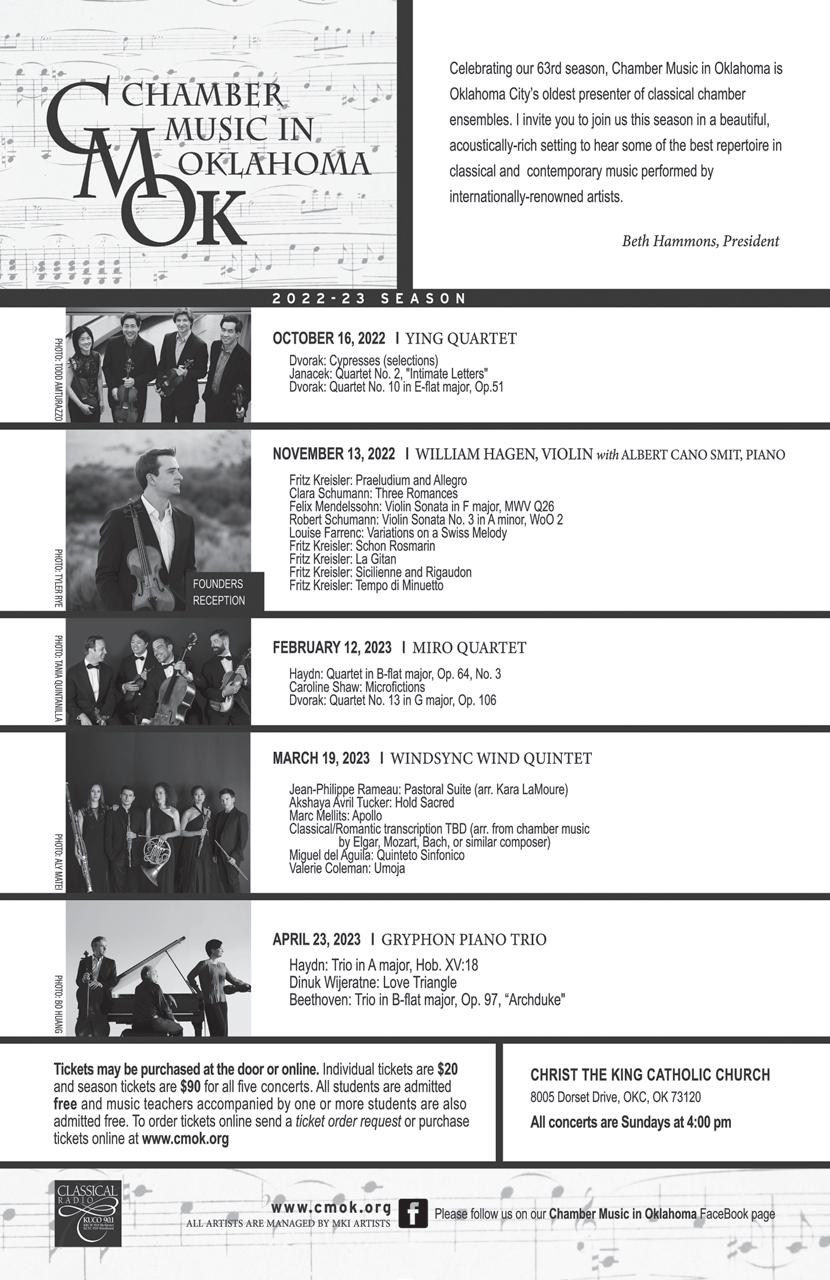

THANK YOU TO THESE CHICKASAW NATION’S POP SERIES SPONSORS:


JULIAN
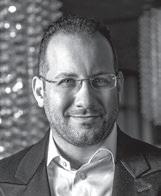

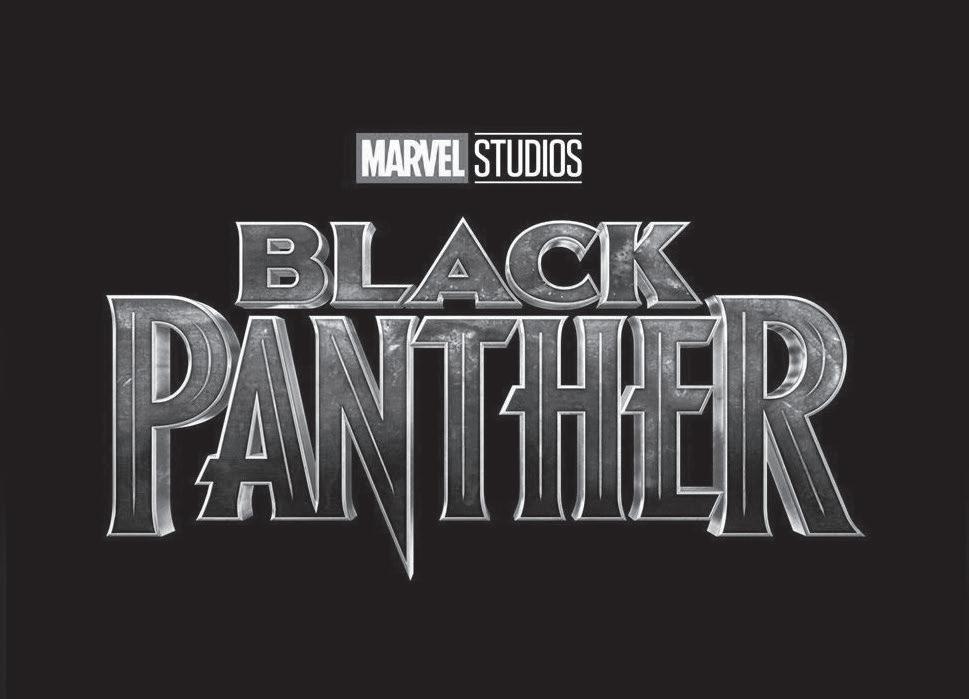
APRIL 28-29, 2023, 8:00 P.M.
MARVEL STUDIOS BLACK PANTHER IN CONCERT
PELLICANO, CONDUCTOR
47
MASSAMBA DIOP, AFRICAN TALKING DRUM
Presentation licensed by Disney Concerts in association with Marvel Studios, All rights reserved. ©2021 MARVEL
MARVEL STUDIOS presents “BLACK PANTHER” in Concert
Starring
CHADWICK BOSEMAN
MICHAEL B. JORDAN
LUPITA NYONG’O
DANAI GURIRA
MARTIN FREEMAN
DANIEL KALUUYA
LETITIA WRIGHT
WINSTON DUKE with ANGELA BASSETT with FOREST WHITAKER and ANDY SERKIS
Music by LUDWIG GÖRANSSON
Executive Producers
LOUIS D’ESPOSITO
VICTORIA ALONSO
NATE MOORE
JEFFREY CHERNOV STAN LEE
Produced by KEVIN FEIGE, p.g.a.
Written by RYAN COOGLER & JOE ROBERT COLE
Directed by RYAN COOGLER
This film is rated PG-13
Today’s performance lasts approximately 2 hours and 15 minutes and includes one 20 minute intermission.
The performance is a presentation of the complete film Black Panther with a live performance of the film’s entire score. Out of respect for the musicians and your fellow audience members, please remain seated until the conclusion of the end credits.
Original Score Album available on MARVEL MUSIC / HOLLYWOOD RECORDS at Disneymusicemporium.com

Presentation licensed by Disney Concerts in association with Marvel Studios, All rights reserved. ©2021 MARVEL.



48
CREDITS MARVEL STUDIOS BLACK PANTHER IN CONCERT
JULIAN PELLICANO

Known for his versatility across a broad spectrum of genres, dynamic interpretations and meticulous technique, American-Canadian conductor Julian Pellicano is the Principal Conductor of Canada’s Royal Winnipeg Ballet and Associate Conductor of the Winnipeg Symphony Orchestra. Bringing an incisive musicality and collaborative spirit to every performance, he has built a wide-ranging international career leading the Winnipeg Free Press to proclaim that “his versatility is truly astonishing.”
As a guest he has conducted orchestras in North America and abroad including the Seattle Symphony, Vancouver Symphony, the National Arts Centre Orchestra, the Orquestra de Valencia, Edmonton Symphony among others. Passionate about the intersection of music and dance, upcoming ballet performances include a debut with the National Ballet of Canada, a return to Orlando Ballet as well as extensive performing and touring with the Royal Winnipeg Ballet.
A specialist in performing films live with orchestra, Mr. Pellicano’s catalogue of film projects encompasses over 20 titles including the Star Wars and Harry Potter series, E.T. The Extraterrestrial, Jurassic Park, Home Alone, Miloš Forman’s award-winning film Amadeus, Fritz Lang’s Metropolis with its original 1927 score, Casablanca, Singin’ in the Rain, The Wizard of Oz, Disney’s Fantasia, The Nightmare Before Christmas, plus several of Charlie Chaplin’s silent classics.
Julian Pellicano studied conducting at the Yale School of Music, the Royal College of Music in Stockholm. Julian Pellicano’s career grew out of unconventional beginnings, performing as a primarily self-taught percussionist, timpanist, drummer and accordionist. He percussion at the Peabody Conservatory, the Royal College of Music in Stockholm, Sweden, and the Yale School of Music. He also holds a degree in philosophy from The Johns Hopkins University.
49 GUEST CONDUCTOR MARVEL STUDIOS BLACK PANTHER IN CONCERT
MASSAMBA DIOP
Massamba Diop is one the most renowned masters of the tama, a talking drum from Senegal, West Africa, known for its abilities to replicate the sounds of human speech. Before the advent of telephones and radio, it was the tama that was called upon to announce important events and send messages from village to village. Recognizing the central role talking drums play in many African cultures, Ludwig Gorensson decided to put it, and Massamba, front-and-center of his Grammy- and Oscar-winning score for Marvel’s Black Panther.
But by the time of Black Panther, Massamba was already a seasoned figure on the world music scene. He first came into the limelight as lead percussionist and founding member of Daande Lenol (The Voice of the People), the band of Senegalese super-star Baaba Maal. Over the past 40 years the group has toured the world, working with many notable musicians and releasing dozens of albums, including “Firin’ in Fouta”, which was nominated for a Grammy in 1996. Massamba has also performed and recorded with the likes of James Brown, Mumford & Sons, Carlos Santana, Herbie Hancock, Harry Belafonte, and Angelique Kidjo. He appeared on Peter Gabriel’s landmark release “Passion”, which won a Grammy in 1990, and has made several appearances with Playing for Change’s “songs around the world”. He has been part of many major international diplomatic events like the 2004 Nobel Peace Prize Ceremony in Oslo, the 2012 Olympics in London, and joined Stevie Wonder and a star-studded cast in 2009 to perform “Happy Birthday” for Nelson Mandela to close out Mandela Day at Radio City Music Hall in New York. Massamba is also a Remo Percussion, Inc. endorsed artist, and in 2016 helped them design and launch the “Tamani Talking Drum”, the first mass-produced tama available to the public.
In 1993, Massamba and American percussionist Tony Vacca co-founded the Senegal-America project, a grass-roots cultural exchange program which has sponsored various educational, health care, and artistic initiatives in Senegal, and has provided an important venue for African musicians in the States. Massamba and Tony tour the Northeast each year with a variety of performances, school programs, and workshops, from their Northampton, MA base. Massamba has several other regular collaborators including Surabhi Ensemble in Chicago, Walo in Portland, Oregon, and Total Rhythm in San Francisco. He currently calls Columbus, Ohio home.

50 GUEST
MARVEL STUDIOS BLACK PANTHER IN CONCERT
ARTIST
LUDWIG GÖRANSSON

In a career spanning only 12 years, Ludwig Göransson has amassed an impressive resume in both the recording and motion picture industries, earning an Academy Award, an Emmy Award, multiple Grammy Awards and countless other nominations. After working as an assistant to composer Theodore Shapiro, Göransson got his first big break writing music for the NBC television series, Community. This led to a friendship and collaboration with Donald Glover, who performs under the stage name Childish Gambino, on several studio albums including Because the Internet and Awaken, My Love. Göransson has been nominated for six Grammys with Childish Gambino, and won two in 2019 for the Billboard Hot 100 Number One hit song “This Is America,” which became a cultural phenomenon and garnered world-wide acclaim.
While pursuing his masters degree in film scoring at USC, Göransson met his other longtime collaborator, director Ryan Coogler, when he scored his short film, Locks. Over the next nine years, Göransson would score all three of Coogler’s feature films. Much like iconic filmmaking duos Hitchcock and Herrmann or Spielberg and Williams, Coogler’s diverse filmography has allowed Göransson to show his range as a composer, writing understated melodies for Fruitvale Station, hyping up audiences for Creed, and infusing African percussion into his themes for Black Panther. In 2019, Göransson earned multiple awards and nominations for his score for Black Panther including a Golden Globe nomination, a Grammy Award for Best Score Soundtrack, and an Academy Award for Best Original Score. He won two Grammy Awards for his song “This is America”, which he co-wrote and co-produced with frequent collaborator Childish Gambino.
Last year, Göransson composed the critically acclaimed score and produced the hit song “The Plan” (performed by Travis Scott) for Christopher Nolan’s TENET, which premiered late Summer 2020. Göransson has received many accolades for his score including a Golden Globe nomination, Broadcast Film Critics Association Award nomination and the score is a finalist on the Academy Awards shortlist for Best Score. Göransson co-wrote and co-produced the songs for DreamWorks’ TROLLS WORLD TOUR with Justin Timberlake, which exceeded expectations with its historymaking digital release, racking up nearly $100 million in sales in just three weeks. This follows his unique Emmy Award winning score for THE MANDALORIAN on Disney+, LucasFilm’s first Star Wars live-action streaming series helmed by director Jon Favreau. Eight full length albums were released, one album per episode, with recurring themes throughout the season. Most recently, Göransson won his second Emmy for Outstanding Music Composition for a Series for Season 2 of THE MANDALORIAN.
Up next, Göransson will score the Star Wars live-action series THE BOOK OF BOBA FETT and Pixar’s TURNING RED. The film, which is directed by Domee Shi, was released in March 2022.
COMPOSER MARVEL STUDIOS BLACK PANTHER IN CONCERT
51



1100 N. Walker Oklahoma City, OK 73102 405-232-0363 Family Owned & Operated in OKC since 1946 Bring program in and get 10% off through 2022
CONCEPTS FROM THE
Maestro
Music, to me personally, is the ultimate reflection of the inner feelings of the composer put into sounds. This season we will take you on a journey through multiple composers where you will experience an array of sounds and feelings. The canvas of each composer is literally alive ... we experience different instruments dominating the texture, from a single piano or guitar to the full Symphony Orchestra.
OKLAHOMA STORIES –CLARA LUPER CENTENNIAL
MAY 13, 2023
• 8:00 P.M.
CLASSICS
Since my arrival in Oklahoma City, I’ve made it a point to tell Oklahoma Stories.
This May would have been the 100th birthday of civil rights activist Clara Luper. Her leadership in a series of successful, carefully planned non-violent sit-in protests of downtown drugstore lunch counters led to the overturning of segregation policies.
To celebrate her life, courage, vision and activism, we commissioned jazz trumpeter and composer Hannibal Lokumbe to write a work for the orchestra, chorus and the narrator, who happens to be Clara Luper’s daughter, Marilyn.
The first half celebrates two other American composers—Joan Tower’s Fanfare for the Uncommon Woman No. 1, and Bernstein’s Symphonic Dances from West Side Story.
America will always be a melting pot. That’s why, here in America and everywhere else for that matter, music will always be the most creative and fun language to unite and transcend.
JOAN TOWER ..........................
Fanfare for the Uncommon Woman No. 1
BERNSTEIN ...........................
Prologue (Allegro moderato)
“Somewhere” (Adagio)
Scherzo (Vivace leggiero)
Mambo (Presto)
Symphonic Dances from West Side Story
Meeting Scene (Meno mosso)
“Cool,” Fugue (Allegretto)
Rumble (Molto allegro)
Finale (Adagio)
Cha-Cha (Andantino con grazia)
(No pause between sections)
Intermission
HANNIBAL LOKUMBE........ Trials, Tears, Transcendence: The Life of Clara Luper*
World premiere of Oklahoma City Philharmonic commission

Commissioned piece underwritten by Leslie and Cliff Hudson
I. Trials
II. Tears
III. Transcendence
Karen Slack, soprano
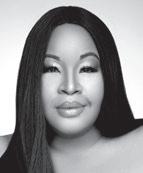
Marilyn Luper Hildreth, narrator
Brannen Temple, percussion
Ambassadors’ Concert Choir and Canterbury Voices
*First Performance on this series
Dedicated to Bill and Helen Cleary
THIS CONCERT IS GENEROUSLY SPONSORED BY:
Fanfare for the Uncommon Woman No. 1 by Joan Tower presented under license from G. Schirmer Inc. and Associated Music Publishers, copyright owners.
ALEXANDER MICKELTHWATE, CONDUCTOR
KAREN SLACK, SOPRANO
53
OKLAHOMA STORIES –CLARA LUPER CENTENNIAL
KAREN SLACK
“...the feisty, rich-voiced soprano Karen Slack...”–The New York Times
Hailed as possessing a voice of extraordinary beauty, celebrated American soprano Karen Slack is a recipient of the 2022 Sphinx Medal of Excellence, Artistic Advisor for Portland Opera, Co-Chair of the Women’s Opera Network with Opera America, and serves on the board of the American Composer’s Orchestra. In January 2022, Slack was appointed Creative Partner with Brooklyn’s National Sawdust.

Highlights of Slack’s season include her debut at The Dallas Opera; recitals with the Miró and Pacifica Quartets, pianist Michelle Cann, and organist Alan Morrison; the premiere of Songs in Flight at The Metropolitan Museum of Art and The Kimmel Center; world premieres with the Nashville Symphony and Oklahoma City Philharmonic; at Carnegie Hall with Orpheus Chamber Orchestra; Beethoven with the Fresno Philharmonic; and productions at Dallas Opera, Portland Opera, and Edmonton Opera.
Slack has appeared with The Metropolitan Opera, Lyric Opera of Chicago, Washington National Opera, San Francisco Opera, Houston Grand Opera, Opera Philadelphia, Scottish Opera among many others. Her debut with Opera Theatre of St. Louis originated the role of Billie in the world premiere of Terence Blanchard’s Fire Shut Up in My Bones. Slack has performed with the Orchestra of St. Luke’s, the Philadelphia Orchestra and conductor Yannick Nézet-Séguin, and abroad with the Melbourne Symphony, Sydney Symphony, Bergen Philharmonic, and St. Petersburg Philharmonic. She made her film debut as the Opera Diva in Tyler Perry’s for Colored Girls. During the COVID-19pandemic, Slack drew on her experience in film to expand her artistic platform through premiere digital performances with Houston Grand Opera, Madison Opera, and Minnesota Opera, urban arias, and launched her acclaimed talk show, #kikikonversations.
The native Philadelphian is a graduate of the Curtis Institute of Music as well as the Adler Fellowship and Merola Opera Program at the San Francisco Opera
BRANNEN TEMPLE
Brannen Temple, born in Austin, Texas, began his music career at the age of ten. He is a three-time Gammy Award-winning American musician best known as a drummer for acts including Eric Burdon and the Animals, Robben Ford, Lizz Wright, Eric Johnson and currently, Ruthie Foster. He has also performed, toured and recorded with Patrice Rushen, Chaka Khan, Jody Watley, Janet Jackson, Sheena Easton, Jimmy Vaughn, Box Scaggs, The Chicks, Nelly Furtado, Gary Clark, Jr. and many others.
Temple is an accomplished session drummer and has played on records, TV shows, movie sound tracks, art installations and has toured the world extensively. Temple is also a music educator who has conducted music clinics worldwide. He has served as drum instructor in Jazz Studies at the University of Texas for several years.
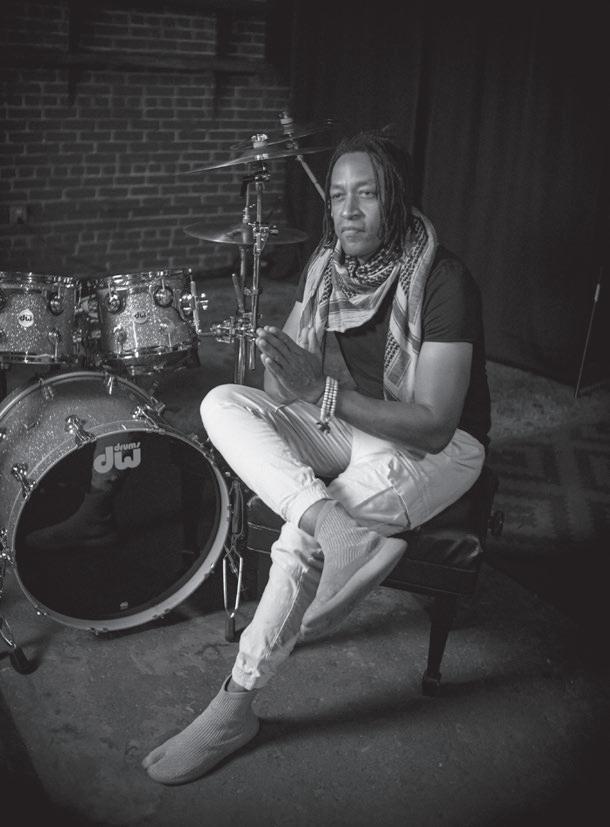
OKLAHOMA STORIES-CLARA LUPER CENTENNIAL
GUEST ARTISTS
Photo Credit Kia Caldwell
MARILYN LUPER HILDRETH
Marilyn Luper Hildreth is one of the late Clara Luper’s three children. A 1964 graduate of Douglass High School, she received her degree from Langston University in 1968.

She became active with the NAACP Youth Council at ten years old. Traveling with her mom to many Civil Rights events, she knew the importance of equal rights and without hesitation would engage herself in discussion and/or protest.
Marilyn was one of the original thirteen children who participated in the first sit-in that took place at OKC Katz Drug Store. That historical day was August 19, 1958. She is known for making the motion at the NAACP Youth Council meeting for the group to picket OKC Downtown Katz Drug Store. They agreed to remain there until they were served. She continues to fight for equality for everyone. Her professional career included owning her successful Allstate Insurance Office located in northwest Oklahoma City. Many citizens were insured with auto and home insurance through her agency. She is now retired.
Marilyn is the mother of three children and the grandmother of three grandchildren. She is an active member of Zeta Phi Beta Sorority, Inc. and Fifth Street Baptist Church, Oklahoma City.
She serves on the Clara Luper Legacy Committee, Clara Luper Sit-In Plaza Committee, and the Oklahoma City Clara Luper Civil Rights Center. She spends her time giving motivational speeches and continuing her mother’s legacy.
in Spencer,
My life changing experience came as a child. My mother taught at Dunjee High School in Spencer, Oklahoma. She wrote the play, “ Brother President”, the story of Martin Luther King, Jr. and the Montgomery, Alabama bus boycott. During this time Oklahoma was totally segregated; everything was “colored this” and “white that”. We could not eat in restaurants, use public facilities such as restrooms, telephone, drink from water fountains, or take public transportation except to ride in the back of the bus.
The night of the performance Herbert Wright was in the audience and was so impressed that he invited us to the NAACP National Convention in New York City to present my mother’s play. Many of us never had never traveled from Oklahoma. We thought the whole world was segregated only to find out that this was not so; Harriet Tubman once said, “A little bit of freedom is a dangerous thing”.
Once you have a taste of freedom you develop a desire to be free. We traveled the northern route and returned to the south facing the age-old problem of segregation, discrimination, and hatred. That is where my struggle against injustice started.
As a result of the struggle, I’ve always been active in community service, voters’ registration, feeding the homeless and other community service activities. However, my biggest contribution is being a mother and grandmother.
Marilyn Luper Hildreth
NARRATOR OKLAHOMA STORIES-CLARA
LUPER CENTENNIAL
My life changing experience came as a child. My mother taught at Dunjee High School
55 “ ”
DR. SANDRA D. THOMPSON

Dr. Sandra D. Thompson is Artistic Director The Ambassadors’ Concert Choir and a native of Ponca City, Oklahoma. Her musical journey began at the age of three years old and since she has continued to develop as a gifted musician. She graduated from Ponca City High School, received a B.Mus., Bachelors in Music from Oklahoma City University (OCU), a M.E.E., Masters of Music Education, from the University of Central Oklahoma (UCO), and a D.M.A., Doctor of Musical Arts Degree in Choral Conducting, from the University of Oklahoma (OU).
Dr. Thompson has taught in several Oklahoma Public Schools before joining UCO’s School of Music faculty. Her teaching duties at UCO include: Fundamentals of Music, Music Theory and Aural Skills, Music for Elementary Teachers, Choral Conducting and Music Appreciation. Dr. Thompson is currently Associate Professor of Music and Division Head of Classroom Studies.
At UCO, Dr. Thompson has conducted several music theatre productions including: “The Man of La Mancha”, “Into the Woods,” and “Company” with some of Oklahoma City’s best known directors. To add to her list of Broadway musicals, Sandra has conducted “High Society”, “The Music of Andrew Lloyd Webber”, and “The Sweet Smell of Success”. At UCO’s Broadway Tonight Series, she conducted “Flipside-The Patti Page Story at the premier and at the Off-Broadway premier. The New York audiences fell in love with the story of Patti Page. She has been the pianist for many productions at OKC’s Lyric Theater and appeared in their productions of “The Wiz and “Kiss Me Kate”.
Dr. Thompson has served on the Board of Directors for Allied Arts, The Gospel Music Workshop of America and The Oklahoma Center for Teacher Preparation. In addition to those roles, her professional affiliation include: American Choral Directors, Music Educators National Organization, Pi Kappa Lambda Music Society and the Delta Sigma Theta Sorority, Inc. She has also been recognized by “Who’s Who Among American Teachers” and The Black Liberated Arts Center (BLAC) for Educating Future Musicians.
Dr. Thompson has been a member of the Ambassadors’ Concert Choir for more than 25 years. She is also the Assistant Minister of Music at the Evangelistic Baptist Church of Christ in OKC.
Dr. Thompson became the Artistic Director of the Ambassador’ Choir in 2010. As the choir embarks on its 40th Concert Season, Dr. Thompson’s expertise and exceptional musicianship will lead the Ambassadors’ to new heights of excitement and performance in the OKC community and beyond.
56
OKLAHOMA STORIES-CLARA
CENTENNIAL
GUEST ARTIST
LUPER
AMBASSADORS’ CONCERT CHOIR
The Ambassadors’ Concert Choir has been thrilling audiences with its spirited musical offerings since 1979. The choir performs a diverse blend of music of all genre and many cultural traditions; including classical, spirituals, jazz, gospel, patriotic music, hymns, Broadway show music and popular music. The 75–100 member choir is predominantly AfricanAmerican by nature, but people of all cultures participate and are welcomed.
The Ambassadors’ are proudest of their tradition of giving glory and honor to God the Father, Son and Holy Spirit. Lives have been touched, spirits have been changes and hearts have been moved by the music of the Ambassadors’ Concert Choir for over 30 years.
The Ambassadors of Faith Choir was founded in 1979 by Maestro Kenneth Kilgore as an extension of the music ministry of Saint John Baptist Church in Oklahoma City. Mr. Kilgore convened approximately 40 local singers and musicians to form a choir that would provide an opportunity to perform all types of sacred music at the highest levels of professionalism and musicality. The choir grew in size, professionalism and repertoire, adding singers and musicians from diverse congregations, faiths, ethnicities and socioeconomic backgrounds. The choir was incorporated as Ambassadors’ Concert Choir in 1985.
The choir has performed throughout the United States and in Mexico. The Ambassadors’ have provided music for the inaugurations of the past six Oklahoma Governors, for the nationally televised first Murrah Federal Building Bombing Memorial (attended by then President Bill Clinton) and with such performing talents as Linda Twine, Simon Estes, Canterbury Voices, Thomas and Carol Bryce-Carey, Leona Mitchell and the International Organist Guild. The Ambassadors’ Concert Choir was inducted into the Oklahoma Jazz Hall of Fame in 1992.
The Ambassadors’ concert Choir currently performs under the direction of Dr. Sandra Thompson, Music Professor at the University of Central Oklahoma, and is accompanied by a host of talented musicians and entertainers. The history of the Ambassadors’ is continuing to be written.
GUEST ARTISTS OKLAHOMA STORIES-CLARA LUPER CENTENNIAL
57
RANDI VON ELLEFSON
Dr. Randi Von Ellefson has served as Professor of Music and Director of Choral Activities at Oklahoma City University and Artistic Director of Canterbury Voices since 2004. Under his direction, Canterbury has presented four world premieres (works by Jerod Impichchaachaaha’ Tate, Stephen Paulus, Edward Knight, and Dominick Argento). At Oklahoma City University he directs the Chamber Choir and the University Women’s Chorus, and teaches courses in the graduate choral curriculum.

He holds degrees from Texas Lutheran University, the University of Minnesota and Arizona State University. He is a founding member of the National Collegiate Choral Organization (NCCO), serving twice as president. Dr. Ellefson has been a guest conductor and professor at the Hochschule für Musik in Munich, Germany and taught at Payap University in Chiang Mai, Thailand. He has been president of the Northwestern and Central Divisions of the American Choral Directors Association (ACDA) and served in leadership in the Music Educators National Conference (MENC) and the National Association of Teachers of Singing (NATS).
Ellefson has conducted many all-state choirs, had choirs perform at state, regional and national conventions of MENC and ACDA, served as an adjudicator at national choral competitions and led choirs in national and international tours in Europe, Asia, Australia and Russia. Reviews (in Fanfare and Gramophone magazines) of choral performances and recordings have noted a particular ability of his choirs to “sing from the heart” and “express significant emotion and depth of feeling” while “maintaining superb intonation and technical precision.” In the summer of 2014, Dr. Ellefson was part of a group from Canterbury Voices who traveled to Paris to perform the Fauré Requiem at the Church of the Madelaine where it was premiered. The group also joined many other choirs at Normandy Memorial on July 4th to sing and commemorate the 70th anniversary of the D-Day Invasion
58
GUEST ARTIST OKLAHOMA STORIES-CLARA LUPER CENTENNIAL
CANTERBURY VOICES
Now in its fifth decade, Canterbury Voices has grown into the premier symphony chorus of Oklahoma, bringing singers and audiences from throughout our great state to the place where music truly comes alive. Canterbury Voices was founded in May 1969 as Canterbury Choral Society, and met at All Souls Episcopal Church with 60 singers. In 1997, Canterbury took the reins of the Children’s Choral Society of Oklahoma, and grew into a four-choir, 200-voice educational organization. The 130-member Adult Chorus is the flagship program – the largest of its kind in Oklahoma. All singers are auditioned, most with extensive musical and stage experience, and come from all over Oklahoma. Canterbury Voices collaborates with other arts organizations including the OKC Philharmonic, Oklahoma City Ballet, and Oklahoma City Jazz Orchestra, as well as many talented singers and musicians from around the United States, including Kelli O’Hara, Sarah Coburn, Gabriel Preisser, Barry Manilow, and Ron Raines. Canterbury Voices also strives to grow the catalog of new music by commissioning new choral works by composers including Stephen Paulus, Edward Knight, Jerod Impichchaachaaha’ Tate, and Dominick Argento. In May, Canterbury Voices was named a national finalist for Choral Performance and Virtual Performance for the American Prize.

GUEST ARTISTS OKLAHOMA STORIES-CLARA LUPER CENTENNIAL
59
PROGRAM NOTES
expanding the breadth of her composition to encompass orchestras as well as smaller ensembles. Since then, she has fielded commissions from many leading orchestras, chamber groups, and soloists and has served as composerin-residence for the Orchestra of St. Luke’s (for 10 years) and the Pittsburgh Symphony.
Fanfare for the Uncommon Woman No.1 Joan Tower
Single Performance: 3/27/1993
Conductor: Joel Levine
Born: September 6, 1938, in New Rochelle, New York
Residing: New York City
Work composed: 1986, on commission from the Houston Symphony
Work dedicated: To conductor Marin Alsop
Work premiered: January 10, 1987, with Hans Vonk conducting the Houston Symphony
Instrumentation: Four horns, three trumpets, three trombones, tuba, timpani, bass drums, snare drum, cymbals, gongs (or tam-tams), temple blocks, tomtoms, and triangle
Joan Tower was born into a family of ancient New England lineage, but when she was nine the family moved to La Paz, Bolivia, high in the Andes, where her father worked as a manager of tin mines. “My whole world turned inside out,” Tower recalled. “We had servants of Incan descent who lived with us, and they would celebrate the Saint’s Days—and there were a lot of Saint’s Days!—with fantastic festivals, lots of music and dancing. My nurse would take me ... and whatever percussion instruments we’d find there, I’d play them. That’s where my love for percussion, dance, and rhythm developed.”
She returned to the United States at the age of 18 to study at Bennington College and, later, Columbia University, where she earned a doctorate in composition. She co-founded the Da Capo Chamber Players in 1969 and served as its pianist for 15 years. In 1972 she began teaching music at Bard College, where she remains on the faculty a half-century later. In 1984 she embarked on a term as composer-inresidence at the St. Louis Symphony. It proved to be a critical stepping-stone. Although she remained almost exclusively a composer of instrumental music, she began

She has been singled out for some of music’s most prestigious honors, including the Grawemeyer Award in 1990, for her orchestral piece Silver Ladders, which was also honored with a Kennedy Center Friedheim Award. She was the first composer invited to write a Ford Made in America consortium commission, with the resulting piece—aptly named Made in America—being played by orchestras in each of the 50 states over the course of two seasons. The Nashville Symphony’s premiere recording of it received three Grammy awards in 2008, including for Best Contemporary Classical Composition. In 2019, Tower was named Composer of the Year by Musical America and was presented the Gold Baton of the League of American Orchestras. The following year she received the national service award of Chamber Music America.
Her Fanfare for the Uncommon Woman has become a much-played modern classic since it was introduced in 1986, by now having achieved some 900 performances. In fact, it spawned a whole series of similarly named pieces—six so far, each for a different assemblage of instruments, each dedicated to a woman of note—with the ensuing fanfares appearing in 1989, 1991 (commissioned by Carnegie for its centennial), 1992, 1993, and 2014. The first Fanfare for the Uncommon Woman was written as a response to the famous Fanfare for the Common Man composed in 1942 by Aaron Copland. “[It] employs, in fact, the same instrumentation,” she said. (Well, she actually calls for a larger array of percussion instruments.) “In addition, the original theme resembles the first theme in the Copland. It is dedicated to women who take risks and who are adventurous.”
In an interview with Abby White for BMI’s MusicWorld, Tower elaborated about the genesis of the piece: “This was after the ’60s and ’70s when the consciousnessraising was happening and all these feminists were lashing out about women not having enough power or income, and I was reading a lot of the feminist books. I was really on board with that. And then the Houston Symphony came along and said, ‘We’d like you to write a fanfare.’ And I said, ‘OK, a fanfare, what the hell is a fanfare? Oh yeah, it has a lot of brass, I think. So then I started thinking about Copland and the only fanfare I knew, Fanfare for the Common Man, and the title really bothered me. For the ‘common man’? What the hell is that? It’s kind of elitist. So, I had to turn that one around.”
OKLAHOMA STORIES-CLARA LUPER CENTENNIAL
TOWER 60
OKLAHOMA STORIES-CLARA LUPER CENTENNIAL
and a Catholic boy on New York’s Lower East Side, was altered to reflect the more up-to-date social issue of gang conflict. Much of the composition was carried out more-or-less concurrently with Bernstein’s work on his opera Candide. It was while working on these projects, in November 1956, that Bernstein was named Joint Principal Conductor of the New York Philharmonic, an appointment that placed him in a position to succeed Dimitri Mitropoulos as that orchestra’s music director in 1958.
Symphonic Dances from West Side Story
Leonard Bernstein

First Performance: 1/12/1965
Conductor: Guy Fraser Harrison
Last Performance: 5/14/2016
Conductor: Joel Levine
Born: August 25, 1918, in Lawrence, Massachusetts
Died: October 14, 1990, in New York City
Work composed: The musical West Side Story was composed principally from Autumn 1955 through Summer 1957, and Bernstein assembled portions of the score into the Symphonic Dances in early 1961, overseeing the orchestration for this version as it was carried out by Sid Ramin and Irwin Kostal
Work dedicated: “To Sid Ramin, in friendship.”
Work premiered: The musical itself on August 19, 1957, at the National Theatre in Washington, D.C; the Symphonic Dances on February 13, 1961, with Lukas Foss conducting the New York Philharmonic at Carnegie Hall
Instrumentation: Two flutes and piccolo, two oboes and English horn, two clarinets plus E-flat clarinet and bass clarinet, alto saxophone, two bassoons and contrabassoon, four horns, three trumpets, three trombones, tuba, timpani, bongos, suspended cymbal, cymbals, tenor drum, snare drum, bass drum, four pitched drums, xylophone, trap set, three cowbells, timbales, conga drum, police whistle, vibraphone, chime, woodblock, triangle, glockenspiel, tom-tom, guiro, maracas, finger cymbals, tambourine, harp, piano, celesta, and strings
As early as 1949, Leonard Bernstein and his friends
Jerome Robbins (the choreographer) and Arthur Laurents (the librettist) batted around the idea of creating a musical retelling of Shakespeare’s Romeo and Juliet set amid the tensions of rival social groups in modern New York City. The project took a long time to find its eventual form. An early version tentatively titled East Side Story, involving the doomed love affair between a Jewish girl
As the production of West Side Story moved into the home stretch it was beset with several crises. Cheryl Crawford, the producer, got cold feet about what she termed “a show full of hatefulness and ugliness,” but her partner Roger Stevens jumped in to ensure that the project would continue; and the young Stephen Sondheim, who had been brought on as lyricist, snagged the interest of his friend Harold Prince to be involved as a producer. To everyone’s amazement, Robbins announced at the eleventh hour that he would rather spend his time directing than choreographing the show, thereby jeopardizing Prince’s participation; in the end, Robbins was persuaded to stay on as choreographer and was granted an unusually long rehearsal period as an inducement.
On August 19, 1957, West Side Story opened in a try-out run in Washington, D.C., with a host of government luminaries in attendance. (During the intermission, Bernstein ran into Supreme Court Associate Justice Felix Frankfurter, who was in tears.) It proved a very firm hit when it reached Broadway, running for 772 performances, just short of two years. After that it embarked on a national tour and eventually made its way back to New York in 1960 for another 253 performances, after which it was released as a feature film in 1961. (It was revisited again in the 2021 cinematic remake by Steven Spielberg.) “The radioactive fallout from West Side Story must still be descending on Broadway this morning,” wrote Walter Kerr, critic of the Herald Tribune, in the wake of the opening in New York, and one might argue that his assumption remains true all these years later. West Side Story stands as an essential, influential chapter in the history of American theatre, and its engrossing tale of young love against a background of spectacularly choreographed gang warfare has found a place at the core of Americans’ common culture.
In the opening weeks of 1961, Bernstein revisited his score for West Side Story and assembled nine sections into what he called the Symphonic Dances. The impetus was a gala fundraising concert for the New York
BERNSTEIN PROGRAM NOTES
61 CONTINUED ON PAGE 62
Philharmonic, to be held the evening before Valentine’s Day. The event was styled as an overt love-fest, celebrating not only his involvement with the orchestra up to that time but also the fact that he had agreed that month to a new contract that would ensure his presence for another seven years. In the interest of efficiency, Bernstein’s colleagues Sid Ramin and Irwin Kostal, who had just completed the orchestration of West Side Story for its film version, suggested appropriate sections of the score to Bernstein, who placed them not in the order in which they occur in the musical but instead in a new, uninterrupted sequence derived from a strictly musical rationale. Two of the most popular favorites of the musical’s songs are found in the pages of the Symphonic Dances: “Somewhere” and “Maria” (in the Cha-Cha section), though not the also-beloved “America,” “One Hand, One Heart,” “I Feel Pretty,” or “Tonight.”
Hannibal Lokumbe’s long career has reached into the areas of performance, composition, poetry, and social activism. He was born (and given the name Marvin Peterson) in the town of Smithville, Texas. “When I was a kid there,” he says, “it was totally segregated, with a line of demarcation, and living insulated in a segregated community was pure heaven. It was that village that people are always talking about when they say ‘It takes a village’; I was raised by that village, and we flourished in all the love and brilliance.” In the 1990s he moved back to Smithville as a place for his family to blossom, and he lives there still today.
During the years between he had achieved acclaim as a jazz trumpeter in New York, where he moved in 1970. There he performed with such notable colleagues as Gil Evans, Roy Haynes, Cecil Taylor, Pharoah Sanders, and Elvin Jones, building an impressive discography and earning the distinction of becoming a lifetime inductee into the Harlem Jazz Hall of Fame. He also began applying music to social goals. He founded the Music Liberation Orchestra, a program that teaches music, genealogy, and writing to incarcerated men around the country, in institutions that include the Bastrop County Jail (near his home in Smithville), Orleans Parish Prison (New Orleans), and Holmesburg Prison (Philadelphia).

Trials, Tears, Transcendence: The Life of Clara Luper
Hannibal Lokumbe
First Performance on this Series
Born: November 11, 1948, in Smithville, Texas
Residing: Smithville, Texas
Work composed: 2022-23
Instrumentation: Two flutes and piccolo, two oboes and English horn, two clarinets and bass clarinet, two bassoons and contrabassoon, four horns, three trumpets, three trombones, tuba, timpani, bells, glass wind chimes, balafon, shekere, triangle, crotales, small string bells, agogo bell, wood blocks, maracas, snare drum, bass drum, caxixi chimes, crash cymbal, floor tom, bean pods, helix, tambourine, Brother Martin’s Emmet Stick (a custommade jingle-stick), chocalho, celesta, and strings; also solo trap set drum, mixed chorus, solo soprano singer, and narrator
In the 1990s, his compositions began to attract widespread attention, with major impetus coming from his African Portraits, an oratorio premiered by the American Composers Orchestra at Carnegie Hall in 1990. The New York Times described it as tracing “the story of slavery and black culture’s contributions to American music, using orchestra, jazz quartet, blues guitar, chorus, gospel singer, African griot and ethnic instruments.” It was recorded by the Chicago Symphony Orchestra under its then-music director Daniel Barenboim, and Lokumbe estimates that it has been programmed 120 times by orchestras nationwide. In 1999 he received a Bessie (New York Dance and Performance Award) for Love Poems for God, developed with choreographer Dianne McIntyre. His work would later be recognized through the Detroit Symphony Orchestra Lifetime Achievement Award, the United States Artist Award in Music, the Joyce Award, and (in 2020) the Americans for the Arts Johnson Fellowship for Artists Transforming Communities, among other honors. His music has been commissioned by many of the country’s symphony orchestras, including those of Philadelphia, Detroit, St. Louis, Houston, Baltimore, New Jersey, Nashville, and now Oklahoma City.
Clara Shepard Luper (1923-2011) is a heroine of Oklahoma City’s history, a schoolteacher, civic leader, and
PROGRAM NOTES OKLAHOMA STORIES-CLARA LUPER CENTENNIAL
62
LOKUMBE
unstoppable force in civil rights. In 1958 she organized and led sit-ins at the city’s segregated lunch counters, non-violent acts that eventually proved successful. She went on to champion other civil rights incentives, including equality in banking, voting rights, and improved employment opportunities and housing policies. She was involved in the Oklahoma City sanitation workers strike of 1969 and, at the national level, became active in the NAACP and participated in the Selma and Montgomery marches of 1965, during which she was injured by brutal police response. Today her name is attached to downtown Oklahoma City’s two-mile Clara Luper Corridor, the Clara Luper Post Office, the Oklahoma City Public School’s Clara Luper Center for Educational Services, and the planned Clara Luper Civil Rights Center.
“I have such an affinity for those who fight for the village,” says Lokumbe. “Not long ago, people might have been reticent to sing her praise. Now there is not much risk involved. It is easier for people to stand up for civil rights without putting skin in the game, but we need people of the Clara Luper mindset today more than ever, and we need for everything possible to be done to celebrate someone of her spiritual consequence.” He cites a favorite quotation of Clara Luper’s that he feels goes to the core of her spiritual outlook: “I believe in the sun when the sun does not shine. I believe in the rain when the rain does not fall and I believe in a God that I have never seen.”
About Trials, Tears, Transcendence: The Life of Clara Luper:
Asked to describe this new work, Hannibal Lokumbe characterizes its music as “pure Americana.” He wrote its text as a series of letters between Clara Luper and her daughter, Marilyn Luper Hildreth‚ who serves as the narrator in this performance. “One soloist, Karen Slack, sings letters Clara writes to her daughter, and then Marilyn Hildreth, as narrator, speaks the letters she sends in return. The choir provides a spiritual background and also serves as the voices of people of color, representing students and others who were with Clara. The letters are imagined as they might have been between mother and daughter—and they are approved by the daughter.” He notes how fortunate it is that many of the people who participated in the 1958 sit-ins are still active members of the community.
JAMES M. KELLER

James M. Keller is the longtime Program Annotator of the San Francisco Symphony and was formerly Program Annotator of the New York Philharmonic and a staff writer-editor at The New Yorker. The author of Chamber Music: A Listener’s Guide (Oxford University Press), he is writing a sequel volume about piano music. An earlier version of the Bernstein note previously appeared in the programs of the New York Philharmonic and is used with permission.
Lokumbe often uses the word “veil” to identify a distinct section of a composition, signifying what another composer might call a “scene” or “act.” (“We can move forward in our understanding in one movement, and in the next movement retreat backward,” he explains. “When a veil of understating is lifted from our consciousness we are never the same. I use that analogy to call people to not remain the same, to expand their understanding as veils are lifted.”) “The piece,” he says, “consists of three veils, which flow together into a single span—separate but connected. The chronology begins with her trials, then tears, then transcendence. There is no transcendence without trials, there are no trials without tears. In all my pieces I strive most of all to speak the truth. I feel I accomplished that in this work.”
—JMK
PROGRAM NOTES OKLAHOMA STORIES-CLARA LUPER CENTENNIAL 63
OKLAHOMA RISING
OKC PHIL Retrospective
By Mark Beutler, OKCPHIL Director of Marketing & Public Relations
One of Oklahoma native Jimmy Webb’s earliest successes was writing “Up, Up, and Away” for the 5th Dimension’s 1967 debut album. He produced albums for the Supremes and Cher, and penned several chart-topping songs for Glen Campbell, including “Wichita Lineman, “Galveston” and “By the Time I Get to Phoenix.”
Vince Gill, also prolific in singing, songwriting and a fellow Oklahoman, hit the scene in 1979 as part of Pure Prairie League. He sang background vocals for Rosanne Cash and Pam Tillis, and became one of the top-selling artists of the ‘90s and 2000’s, with hits “When I Call Your Name,” “I Still Believe in You,” and “Oklahoma Swing.”
But when these two legendary composers were approached about writing a new state song for the state’s Centennial, there was a bit of hesitation.
“We did the ‘Oklahoma Rising’ concert at Civic Center in 2006, a year before the actual 2007 Centennial Celebration,” said Joel Levine, Oklahoma City Philharmonic Founder and Music Director Emeritus. “Vince Gill told the audience the story of legendary producer Lee Allan Smith calling to propose the collaboration with Jimmy for a possible new state song. Vince was concerned they were being asked to replace our Rodgers & Hammerstein iconic masterpiece! But Jimmy persuaded Vince to participate by saying Lee Allan really just wanted a celebratory song about our state, and that was their real mission.”
Then on November 21, 2007, the OKCPHIL took center stage at the Centennial Celebration, at what is now the Paycom Center arena.
“There were so many moving parts,” Levine said. “I had to interface with guest artists and learn their music. Some brought a rhythm section, and I worked with them to coordinate tempos. There were TV people for the OETA broadcast and an everevolving script with cues to be followed. The OKCPHIL musicians were troupers, dealing with an unusual setup, stage lights in their eyes, microphones, monitors and all the challenges of a high-tech event. Ultimately our role was to make world-class music happen, suiting the needs of several of America’s finest artists.”
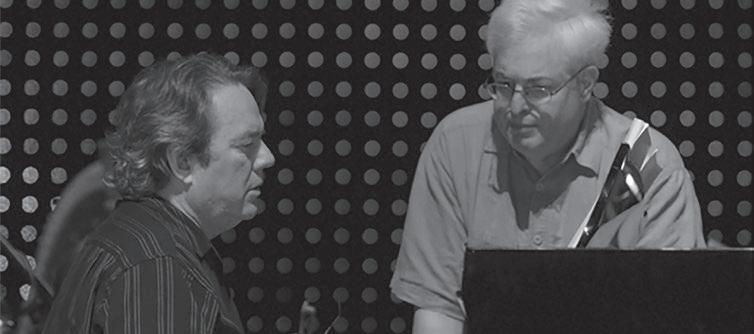
“Oklahoma Rising” made its world debut that night, and became part of Oklahoma’s history.
“I am so blessed to have been part of many of Oklahoma’s historic events,” Levine said. “The invited audience started with the Governor and included virtually everyone in a leadership role in the city and state. To watch the video playback now and see who was there—it is truly astounding. My conducting colleagues were always envious of the opportunities I had to work with famous artists at the top of their field. Of course, the ‘cherry on top’ was leading our fantastic orchestra.”
THROUGH THE YEARS NOVEMBER 2007
Photos courtesy Joel Levine, Founder & Music Director Emeritus
64
The OKCPHIL gratefully acknowledges the generosity of individuals who have chosen to return concert tickets as a donation. This recognition reflects contributions made in the 2022-2023 concert season and are listed through December 31, 2022.
John and Nancy Alsup
Dr. and Mrs. Dewayne Andrews
Dr. and Mrs. John C. Andrus
Mr. J. Edward Barth
Mrs. Betty D. Bellis-Mankin
Martha and Ronnie Bradshaw
Steven Brown
Ms. Jeannene Campbell
Ken Coffey
Dr. Thomas Coniglione
Mrs. Teresa Cooper
William and Mary Ann Corum
Rita Crockett
Lawrence H. and Ronna C. Davis
Vickie Dennis
Nancy P. Ellis
Dr. and Mrs. Royice B. Everett
Arnold and Mari Fagin
John Fink
Mr. and Mrs. Richard C. Floyd
Natalie Kurkjian and Christopher Geyer
Mr. Gregory Gray
Janet Gruel
Mr. and Mrs. James G. Harlow, Jr.
Brent Hart and Matt Thomas
Mr. and Mrs. Frank D. Hill
The Honorable Jerome A. Holmes
Sue Ann and Dudley Hyde
Gerald and Jane Jayroe Gamble
Christina Jefferson
Linda Knox
Mr. Forrest Lacy
Elizabeth McGuiness
John and Anna McMillin
Abigail J. Moore
Charles L. Oppenheim
Tiffany and Corey Phelps
Mr. and Mrs. Michael Pickard
Mrs. Elizabeth A. Rasmussen
Valerie Reimers
Ms. Ruthie Riggs
Dr. Linda Rowland Woody, Ph. D.
Dr. Carl Rubenstein
Dr. Lois Salmeron
Melissa and Todd Scaramucci
Pam and Bill Shdeed
Jerrod and Jamie Shouse
Dr. Richard V. Smith and Jan J. Smith
Dennis and Marianne Stover
Carol Troy
Stephen Wanger
Phillip and Ashton Whaley
Mr. Philip Winters
Ms. Marcia E. Woodward
Jim and Polly Worthington
65
TO THE PHIL
THANK YOU! GIFTS
GIFTS TO THE PHIL
INDIVIDUALS
Continued from page 19
Mr. Chuck Darr
Rita and Thomas Dearmon
Tony and Pam Dela Vega
Gary and Fran Derrick
Kevin and Alisha Dunnington
Nancy P. Ellis
Dr. and Mrs. Royice B. Everett
Ann Felton Gilliland
Kristen and AJ Ferate
Dr. Thurma J. Fiegel
Paul and Debbie Fleming
Gerald and Jane Jayroe Gamble
Mr. and Mrs. Kelly George
Natalie Kurkjian and Christopher Geyer
Drs. Stephen and Pamela Hamilton
Kirk Hammons
David and Sandra Haskett
Walt and Jean Hendrickson
Mr. and Mrs. Frank D. Hill
Mr. and Mrs. Joe R. Homsey, Jr.
Thomas and Elizabeth Hrubik
Leslie and Cliff Hudson
David and Vicki Hunt
Mr. and Mrs. Carlos Johnson
The Fred Jones Family Foundation
Mike and Kay Kellogg
Ms. Claren Kidd
Mike and Kay Lacey
Mary Jane Lawson
Barbara Masters, M.D.
Mr. and Mrs. John A. McCaleb
Cindy and Johnny McCharen
Mr. and Mrs. Tom J. McDaniel
Debbie McKinney
John and Anna McMillin
Mr. and Mrs. K. T. Meade, Jr.
Mari Medley
Deann Merritt Parham
Sandra Meyers
Tom and Peggy Miller
Betsy Mitschke and Steven Helt
Dr. Gene L. Muse
Edward Oliver and Harriet Lord
Charles L. Oppenheim
Tiffany and Corey Phelps
Larry Reed
Mr. and Mrs. Kenneth R. Rees
Tracy Romberger
Kathryn Ryan
Ernesto and Lin Sanchez
Larry and Patricia Sanford
Fred and Maria Schmitt
Jeff Scott
Mr. and Mrs. John M. Seward
Pam and Bill Shdeed
John Shelton
Jerrod and Jamie Shouse
Dr. Richard V. Smith and Jan J. Smith
Rick and Amanda Smith
Donald J. Smock, M.A.
Jeff and Sally Starling
Susan Sutter
Robert and Sharon Varnum
Drs. Bobby and Geetika Verma
Robert and Tammy Weiss
Mr. and Mrs. Kenneth K. Wert
Larry and Leah Westmoreland
Dr. James and Elizabeth Wise
Carol Wright
M. Blake and Nancy Yaffe
Carolyn T. and Don T. Zachritz
FRIEND
$1,000 - $1,499
Anonymous (2)
Hugh G. and Sharon Adams
Beth M. Alonso
Tom and Fran Ayres
Dr. Sterling and Cheryl Baker
Dr. Jack and Ruth Beller
Rev. Dr. Carl Bosteels, D.Min.
Barbara J. Bunce
Louise Cheek
Dr. Thomas Coniglione
Dr. William Cook
Mr. Joel Dixon
Melinda Finley
Sue and John Francis
Dr. Ralph and Lois Ganick
Nina Gaugler
Melvin and Bobbie Gragg
Claudia Holliman
Lois and Roger Hornbrook
Lauren and Rich Johnson
Mr. and Mrs. L.J. Johnson
Sharon and Ken Lease
Dr. and Mrs. Brad A. Marion
Anita R. May
Mr. and Mrs. Ronald J. Norick
Mrs. Barbara Pirrong
Mr. and Mrs. William J. Ross
William J. Ross
Elizabeth Ryan
Mary Sherman
Chris Steves
Dr. and Mrs. James B. Stewart, Jr.
Jonathan and Andrea Stone
Mr. Phillip S. Tomlinson
Mrs. June Tucker
Katherine Walker
Rainey and Casey Williams
PARTNER
$500 - $999
Dr. Gillian Air
Dr. Mary Zoe Baker
Mr. and Mrs. Van A. Barber
Mrs. Gail Beals
Ms. Pamela Bloustine
Martha and Ronnie Bradshaw
Mr. and Mrs. Fred Brown
Mr. and Mrs. Robert M. Calvert
Mrs. Jo Carol Cameron
Mr. and Mrs. Ray Cloer
Mr. and Mrs. Joseph Couch
Kay and Kraettli Epperson
Bruce W. and Joanne Ewing
John and Susan Frank
Mr. and Mrs. Keith G. Golden
George M. and Jo Hall
Dr. Nancy and Capt. George Hector
Mr. and Mrs. David C. Henderson
Lois and Roger Hornbrook
Mr. and Mrs. Stephen Johnson
Mr. and Mrs. Joe A. McKenzie
Annette Munson
Mr. Tim Newville
Sandra Peyton
Susan and Steve Raybourn
Dr. Carl Rubenstein
Kelly and Andy Sachs
John and Hattie Santore
Lee Allan Smith
John and Katherine Spaid
66
Dennis and Marianne Stover
Mrs. June Tucker
Linda and Mike Zeeck
MEMBER
$250 - $499
Judy Austin
Mr. Paul D. Austin and Jane Ford Austin
Ms. Judith A. Barnett
Sherry K. Barton
Jackie and Jerry Bendorf
Dr. and Mrs. Harry Boyd
Linda Burrows
Ms. Carol Combs
Merle and Elizabeth Davis
Dr. Nancy Dawson
Carole Doerner
Brandon Downey
Mr. David J. Feroli
Melinda Finley
Betty Foster
George R. Francis, Jr.
Steven Graham and Vicky Leloie Kelly
David and Vicki Hunt
Rosemary and Paul Lewis
Allison Matoi
Gerry Mayes
Frank McPherson
Lt. Col. Terry L. Mock
Monireh Mohamadi
Michael and Ginger Penn
Kevin Pitcock
Mr. and Mrs. Jack B. Rackley
Mr. and Mrs. Ray Reaves
Mr. and Mrs. Arthur J. Rus
Ms. Edith Nan Scott
Rick Spence
Reta and Richard Strubhar
Ms. Xiao-Hong Sun and Mr. Xiaocong Peng
Greg Taber
Ken Thiele
Bethany Toombs
Mr. and Mrs. Lawrence Towell
Dick Wegener
SPECIAL GIFTS
Honor loved ones, celebrate occasions, recognize achievements and support the Philharmonic’s mission.
In Memory of Priscilla Braun
Linda and Patrick Alexander
Jeanne Blair
Jordan C. Braun
Brian Burgher
John and Susan Frank
Mrs. Jane B. Harlow
George S. Johnson and Jerri L. Johnson
Susan Kivel
Melinda and Henry Musselman
Mona Preuss
Dawn and Mitch Rubinstein
Linda and Floyd Skarky
Fountaingate Homeowners Association
H&L Exploration Company, LLC
Providence Home Care
In Honor of Joan Bryant
Beth and James Hammack
In Memory of William B. and Helen P. Cleary
Steven C. Agee, Ph.D.
Marilyn and Bill Boettger
Louise Cleary Cannon
Mr. and Mrs. Andrew J. Evans, II
In Memory of Herschal Crow
Ms. Betty Crow
In Honor of Marti Ferretti
Sondra and Steve Balaban
In Honor of Jane Jayroe Gamble
Dr. Nancy K. Hall Collins
In Memory of Grandmother
Cornelia Hogg
Jane Hogg Krizer
In Honor of Katherine A. Kirk
D. Benham and Cheryl Kirk
In Honor of Linda Mason Anonymous
In Honor of June H. Parry Anonymous
In Memory of William Ross
Inasmuch Foundation
In Memory of Dick Sias
Linda and Patrick Alexander
Nancy B. and Bob Anthony
Joe and Nancy Bradley
Sandra Cleary, Patty Lewis, and Kemi Harris
Mr. Sean S. Cummings
John and Susan Frank
Dr. Geraldine Gesell
Mrs. Jane B. Harlow
Kim and Michael Joseph
Kris and Peter Markes
Catherine D Sconzo-Blackburn
Doug and Susie Stussi
Ralph and Barbara Thompson
The Fortune Club
The Kerr Foundation, Inc.
In Honor of Emily Stoops
Betsy Banks
In Memory of Dr. Kenneth Tucker
Mrs. June Tucker
In Memory of Tristan Van Allen
Thomas Allen
In Memory of Donna Vogel
Donna McCampbell
In Honor of Valerie Watts
Mary Margaret Holt
In Honor of Renata Wiggin
Dr. and Mrs. J. Christopher Carey
In Memory of Ruth Youngheim
Karen Ross
In Honor of Hong Zhu
Larry and Leah Westmoreland
GIFTS TO THE PHIL
67

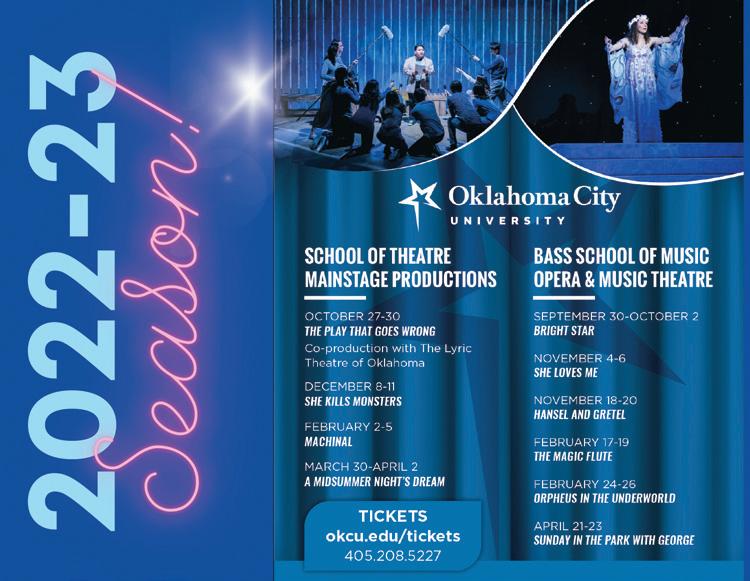

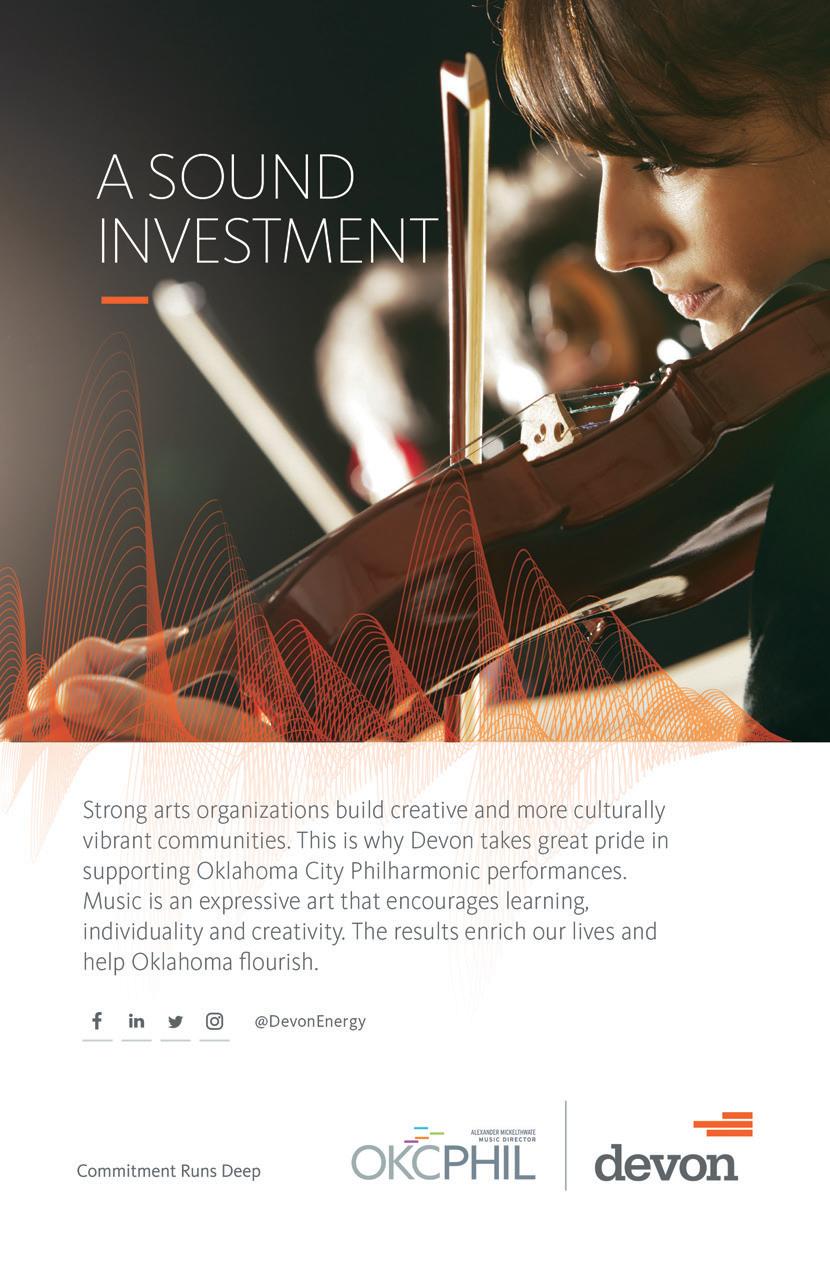
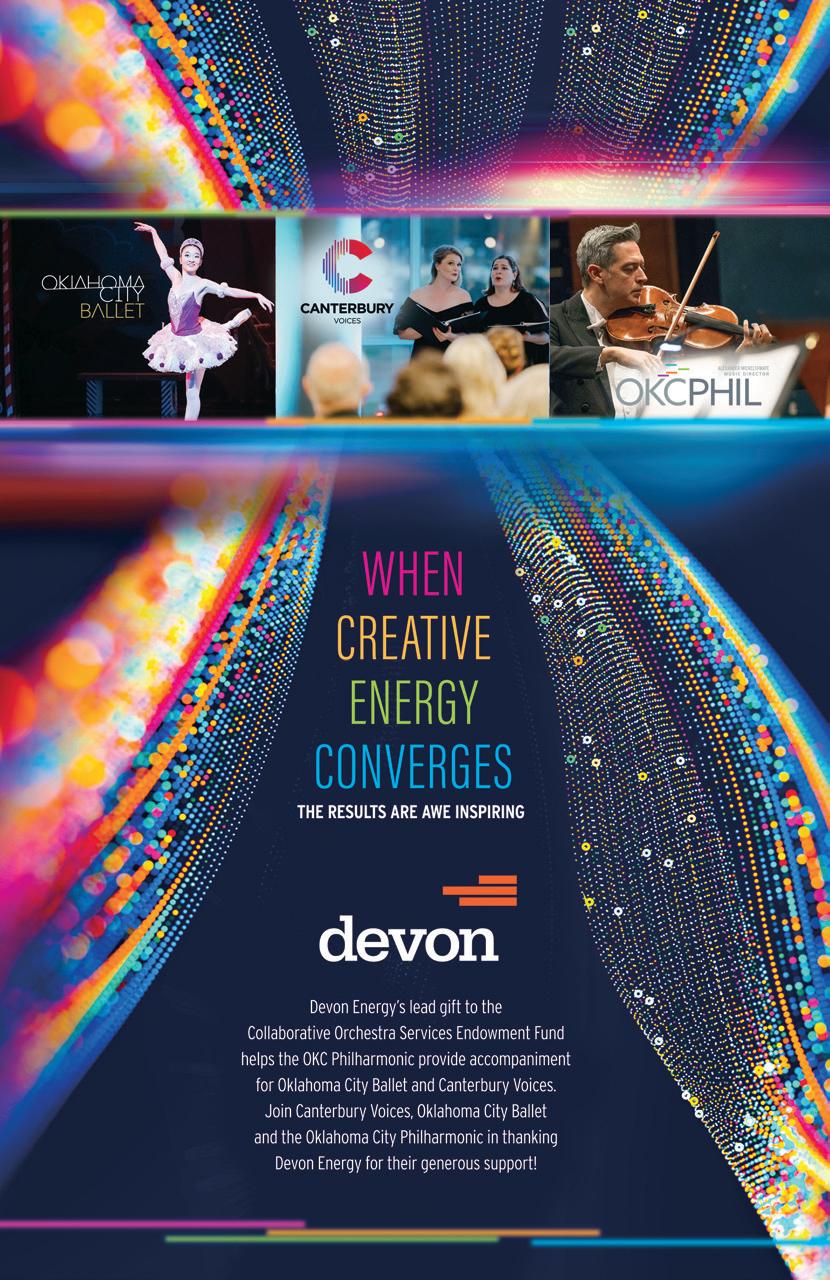

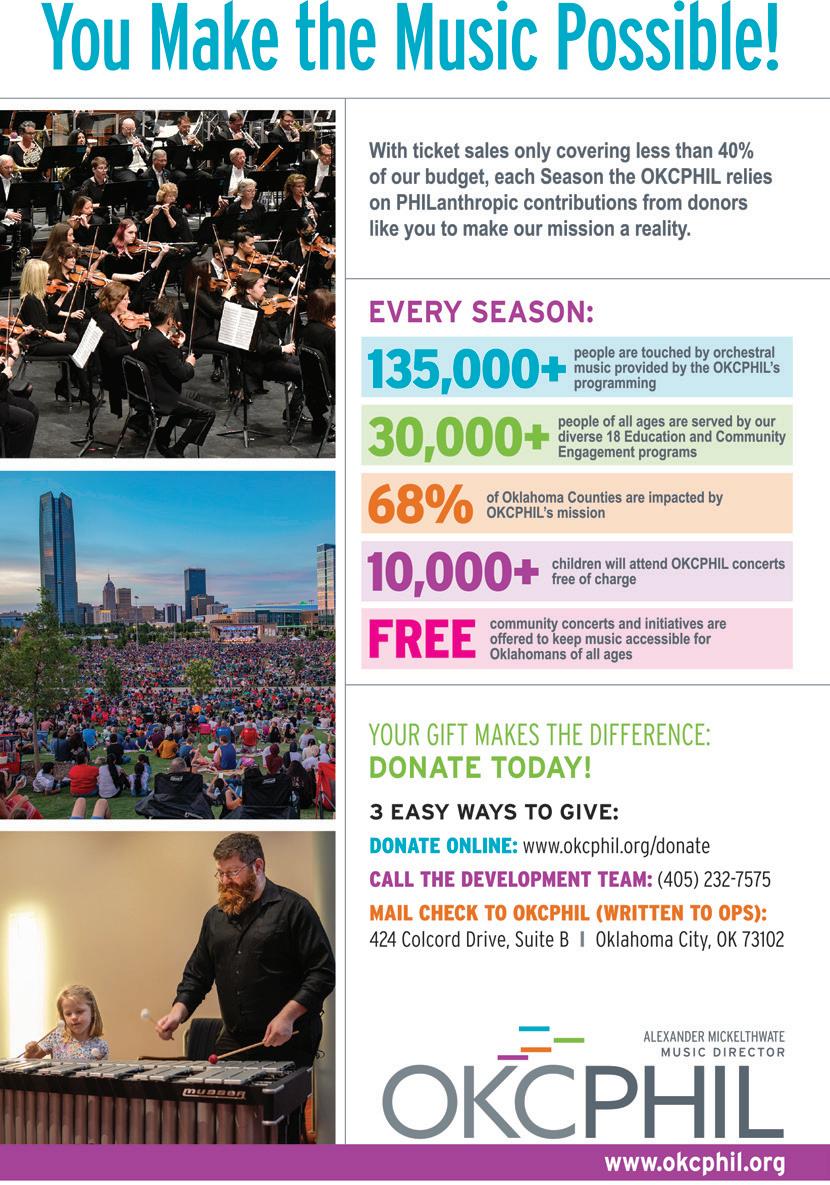
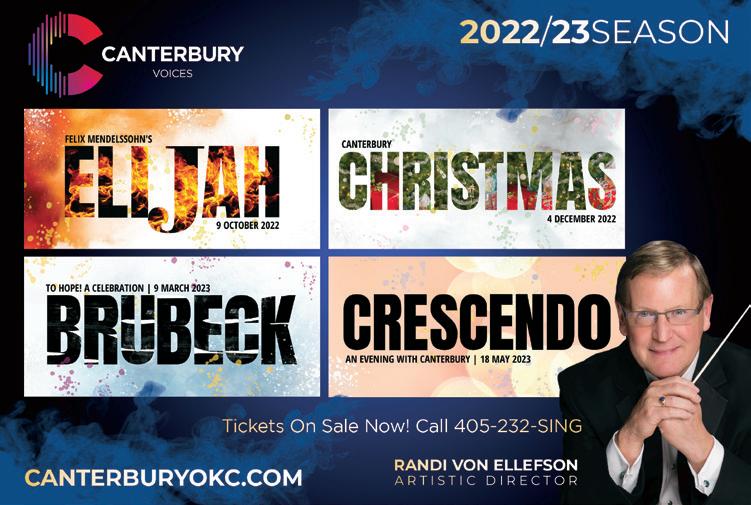

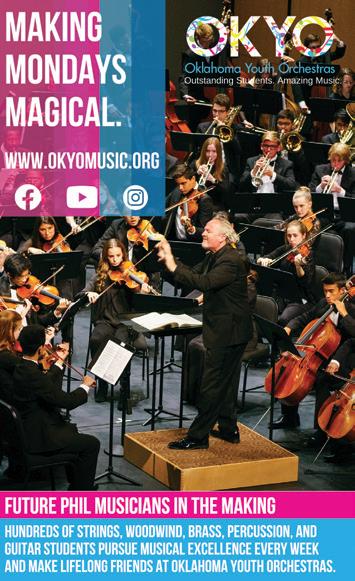








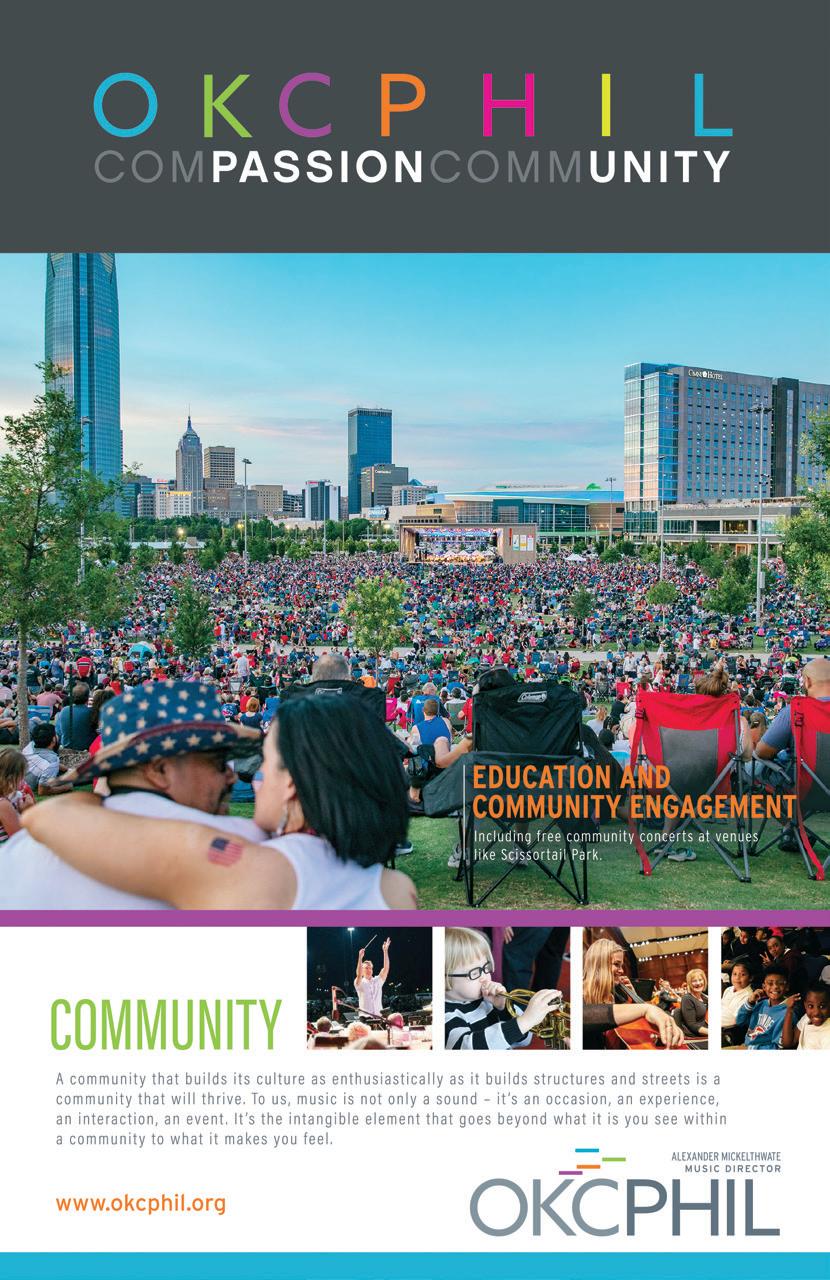









































































 Joshua Bell appears by arrangement with Park Avenue Artists (www.parkavenueartists.com) and Primo Artists (www.primoartists.com). Mr. Bell records exclusively for Sony Classical - a MASTERWORKS label.
Joshua Bell appears by arrangement with Park Avenue Artists (www.parkavenueartists.com) and Primo Artists (www.primoartists.com). Mr. Bell records exclusively for Sony Classical - a MASTERWORKS label.
















































